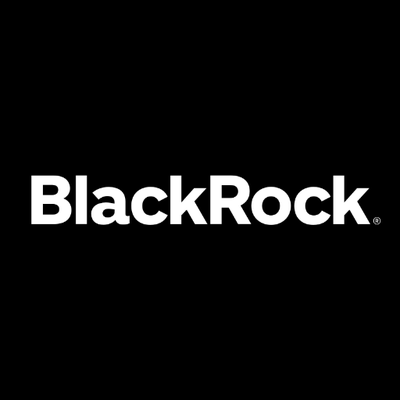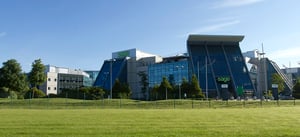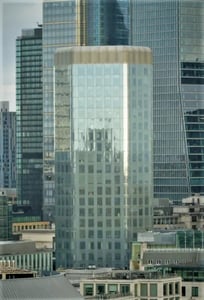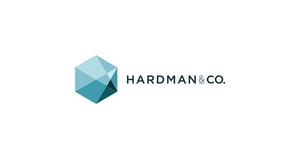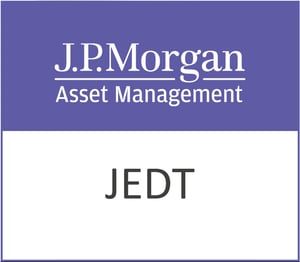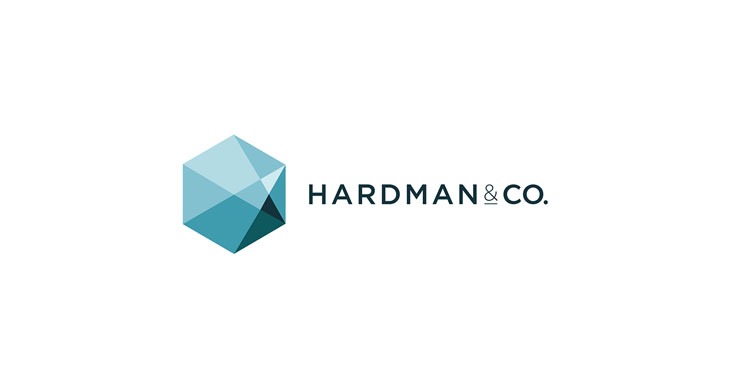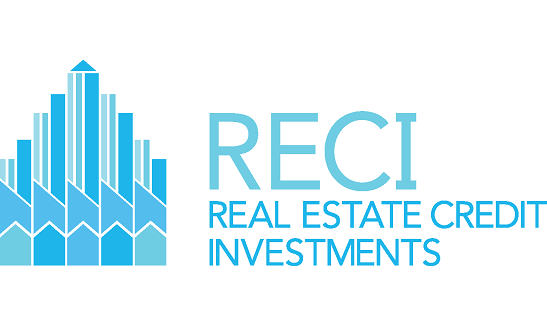BlackRock Throgmorton Trust plc (LON:THRG) has announced its final results for the year ended 30 November 2024.
To learn more about the BlackRock Throgmorton Trust plc please follow this link: blackrock.com/uk/thrg
Performance record
| As at 30 November 2024 | As at 30 November 2023 | |
| Net assets (£’000)1 | 595,908 | 575,925 |
| Net asset value per ordinary share (pence) | 682.82 | 600.72 |
| Ordinary share price (mid-market) (pence) | 593.00 | 579.00 |
| Benchmark Index2 | 16,794.26 | 14,713.60 |
| Discount to cum income net asset value3 | (13.2)% | (3.6)% |
| ========= | ========= | |
| . | . |
| For the year ended 30 November 2024 | For the year ended 30 November 2023 | |
| Performance (with dividends reinvested) | ||
| Net asset value per share3 | 16.3% | (2.3)% |
| Ordinary share price3 | 5.0% | (0.8)% |
| Benchmark Index2 | 14.1% | (6.0)% |
| Average discount to cum income net asset value for the year3 | (9.3)% | (5.2)% |
| ========= | ========= | |
| . | . |
| Performance for the ten years to 30 November 2024 | Performance for the ten years to 30 November 2023 | |
| Performance since 1 July 20144 (with dividends reinvested) | ||
| Net asset value per share3 | 150.9% | 113.5% |
| Ordinary share price3 | 163.7% | 136.9% |
| Benchmark Index2 | 62.1% | 41.1% |
| . | . |
| For the year ended 30 November 2024 | For the year ended 30 November 2023 | Change % | |
| Revenue | |||
| Net revenue profit on ordinary activities after taxation (£’000) | 17,046 | 16,510 | +3.3 |
| Revenue earnings per ordinary share (pence)5 | 18.54 | 16.56 | +12.0 |
| ————— | ————— | ————— | |
| Dividends per ordinary share (pence) | |||
| Interim | 3.75 | 3.30 | +13.6 |
| Final | 14.25 | 11.45 | +24.5 |
| ————— | ————— | ————— | |
| Total dividends payable/paid | 18.00 | 14.75 | +22.0 |
| ========= | ========= | ========= |
1 The change in net assets reflects portfolio movements, share buybacks and dividends paid during the year.
2 The Company’s Benchmark Index is the Deutsche Numis Smaller Companies plus AIM (excluding Investment Companies) Index. With effect from 22 March 2018, the Deutsche Numis Smaller Companies plus AIM (excluding Investment Companies) Index replaced the Deutsche Numis Smaller Companies excluding AIM (excluding Investment Companies) Index as the Company’s Benchmark Index. From 1 December 2013 to 21 March 2018, the Company’s Benchmark Index was the Deutsche Numis Smaller Companies excluding AIM (excluding Investment Companies) Index. Prior to 1 December 2013, the Company’s Benchmark Index was the Deutsche Numis Smaller Companies plus AIM (excluding Investment Companies) Index. The performance of the Benchmark Indices during these periods has been blended to reflect these changes.
3 Alternative Performance Measures, see Glossary contained within the annual report and accounts.
4 Since 1 July 2014.
5 Further details are given in the Glossary contained within the annual report and accounts.
Strategic Report
The Directors present the Strategic Report of the Company for the year ended 30 November 2024.
Chairman’s Statement
2024 in brief
- The year to 30 November 2024 (FY2024) was a very challenging and unusual year. In particular:
- With little demand for UK equities, UK small/mid-cap valuations started the year weak
- Wealth Manager consolidation and exposure limits led to selling (of both the Company and likely other UK small/mid cap funds) throughout the year
- Capital Gains Tax planning drove further selling ahead of the tax year end in April 2024 and the UK Budget in October 2024
- US elections and the UK budget led some investors, in particular UK wealth managers, to allocate away from the UK and further reduce their UK small/mid-cap investments
- The Company’s portfolio has therefore been cautiously positioned by your portfolio manager
- A positive NAV total return of +16.3%, an outperformance of 2.2% vs the Benchmark, is therefore a pleasing result for a cautiously positioned portfolio in challenging and unusual year
- Your portfolio manager, Dan Whitestone, has outperformed the benchmark in 9 of the last 10 years. Indeed, since March 2015 when Dan Whitestone became portfolio manager, he has outperformed the benchmark by 78.7% (generating a total NAV return up to 30 November 2024 of +130.5% vs a benchmark return of +51.8%)*
- To keep the share price performance as close as possible to the NAV performance and keep the discount at a level compatible with the liquidity of the portfolio, significant buy backs were undertaken during the year representing 9.4% of our shares in FY2024 (FY2023: 5.3%; since buybacks started in April 2022: 16.3%). A further 6.6% has been bought back since the year end (up to the latest available date of 18 February 2025)
- Despite these extensive buy backs, the Company delivered a disappointing FY2024 share price total return of +5.0%, underperforming the Benchmark by 9.1% and some 11.3% below the NAV performance, as the:
- discount widened at year end to -13.2% (30 November 2023: -3.6%)
- average FY2024 discount was up at -9.3% (FY2023: -5.25%)
- Average FY2024 discount of -9.3% vs a UK Smaller Companies sector average of -11.1%
- Longer-term NAV and Share Price performance however remains good:
- Strong over 10 years; our NAV has outperformed the Benchmark by 88.8% and the share price by 101.6%
- Although weaker over 3 and 5 years as the impact of the Ukraine invasion on our asset class and our underperformance versus our benchmark in 2022 works through
- Dividends increased by +22%. Total dividends of 18.00p per share for FY2024 (FY2023: 14.75p)
- The Board remains confident in the Manager, the portfolio manager and his investment philosophy and process, and the rest of the BlackRock Emerging Companies investment team. The Board therefore believes that when confidence in the UK returns and demand for UK small/mid-cap funds and equities improves, BlackRock Throgmorton Trust plc is well positioned to return to its position as a sector leader
*(Dan Whitestone was co-manager of the portfolio until February 2018 after which he became sole portfolio manager).
Overview
The year to November 2024 was a challenging one for UK markets. The few green shoots of recovery seen in the early part of the year wilted as what optimism there had been around the economic plans of the new UK government faded. Growth expectations, consumer confidence and business confidence have all since taken a nasty hit. Given the extent to which your Company’s holdings are exposed to the domestic economy and against this difficult backdrop, I am pleased to report that the Company’s NAV generated a positive return of 16.3%, outperforming its benchmark by +2.2%.
One feature of the period under review has been continued merger and acquisition (M&A) activity in the UK. As our portfolio manager, Dan Whitestone, explains in his report which follows, this can be beneficial if you own the companies that are bid for and a detractor from relative performance if you don’t. As it happens, M&A in the UK small and mid-cap space has been a material headwind to our relative performance this year. He expects more of this activity to continue in 2025 given the compelling long-term value on offer in the UK market. This may act as either a tailwind or headwind depending upon which companies are acquired and whether or not we hold them in our portfolio. Overall, he remains optimistic that he can find long-term opportunities across the market and that he can use your Company’s ability to short companies to provide some extra returns in the less compelling areas of the market. In these tricky times we are pleased to have a manager able to generate alpha from falling valuations as well as rising ones.
As a Board we remain confident in both the outlook for our portfolio and the opportunities currently available in our asset class, and are resolutely focused on achieving the Company’s objectives of providing shareholders with long-term capital growth and an attractive total return through investment in primarily UK smaller and mid-capitalisation companies.
Performance
Over the year to 30 November 2024, the Company’s Net Asset Value (NAV) total return was +16.3% compared to a return of +14.1% from the Company’s Benchmark Index, an outperformance of +2.2%. The Company’s share price returned +5.0%, underperforming the Benchmark Index by +9.1% as our discount widened during the period. Since the period end and up to the close of business on 18 February 2025, the Company’s NAV has fallen by 3.2%, and the Benchmark Index has fallen by 0.5% (all figures with dividends reinvested).
Over the short and medium term the Company’s discount to NAV has widened, in large part as result of the fact that UK equities now have been out of favour for several years. Over the longer term the performance remains strong. For the five and ten-year periods to 30 November 2024, the Company’s NAV returned +17.1% and +150.9%, comparing favourably to the Benchmark Index returns of +14.5% and +62.1%. The share price has returned double the benchmark over the ten years to 30 November 2024.
Further information on the Company’s performance, the factors that contributed to performance during the period and the outlook for the second half of the financial year are set out in the Investment Manager’s Report below.
Performance fee
The performance fee is calculated over a two-year rolling period. For the annualised rolling two-year performance period to 30 November 2024, the Company has outperformed the benchmark by 2.7% as at 30 November 2024 (gross of fees). A performance fee of £2,982,000 relating to this performance period has therefore crystallised as at the date of this report (of which £1,389,000 had been accrued in the prior year).
For the annualised rolling two-year performance period to 30 November 2025, the Company has outperformed the benchmark by 0.6% as at 30 November 2024. A performance fee of £625,000 relating to this performance period has been accrued at the date of this report; this does not become payable until 30 November 2025 and is subject to the ongoing performance of the Company.
Further information on management fees can be found in the annual report and accounts and in Note 4 to the financial statements below.
Revenue return and dividends
The revenue return per share for the period amounted to 18.54 pence per share, an increase of 12%.
The Directors are pleased to declare a proposed final dividend of 14.25 pence per share for the year ended 30 November 2024 (2023: 11.45p). This, together with the interim dividend of 3.75 pence per share paid on 27 August 2024, gives a total dividend for the year of 18.00 pence per share, increasing the total dividend distributed to shareholders compared to the prior financial year by 22.0%. This dividend will be paid on 11 April 2025, subject to shareholder approval at the forthcoming AGM, to shareholders who are on the Company’s register on 28 February 2025.
Policy on share price premium/discount
The Board believes that the best way of addressing any long term discount to NAV over the longer term is both to generate good performance and to drive demand for the Company’s shares by widening the awareness of the Company’s attractions. However, the Board also has a policy of buying back shares in the Company when the discount is excessive, something we consider in relation to market conditions, performance and the ongoing attractiveness of the investment proposition.
We were disappointed that during the twelve months to 30 November 2024 the Company’s share rating ranged between a discount to NAV of -3.6% and -13.7%, and ended the period at a discount of -13.2% (30 November 2023: -3.6%). This compares with the weighted average discount of the UK smaller companies sector which ended the period at an average discount of -11.1% and given that the Board aims to minimise share price volatility and encourage the Company’s share price to trade within a tight range, we have felt the need to take regular and targeted action to support the shares.
It is, of course, not possible to have full control over the discount during a period in which there is little demand for both investment trust shares and smaller company shares in the UK and when the UK government, to date, has yet to convince the markets that its policies will generate the growth it seeks. Nonetheless, we remain convinced that our share buy back activity has been beneficial in reducing the volatility of our share rating and delivering NAV accretion.
Your Board will continue to deploy its powers to support the share price by buying back the Company’s shares where it believes that it is in shareholders’ best interests to do so.
Share buy back activity
During the period under review, the Company bought back a total of 8,600,297 ordinary shares for a total consideration of £52,098,000. Since 30 November 2024 and up to the latest practicable date of 18 February 2025, a further 5,850,000 shares have been bought back for a total consideration of £34,228,000. As at 18 February 2025, the Company’s shares were trading at a discount of 10.6% versus an average discount for the rest of the peer group of 11.9%. All shares were bought back at a discount to the prevailing NAV and were therefore accretive to existing shareholders.
Renewal of buy back authority
At the Company’s annual general meeting in March 2024, the Directors were given authority to make market purchases of up to 14,276,699 Ordinary Shares, representing 14.99 per cent. of the issued Ordinary Share capital (excluding treasury shares).
The Board concluded that this authority could be fully utilised before the Company’s next annual general meeting and accordingly resolved to convene a General Meeting of the Company to renew the expiring authority. A Circular and Notice of Meeting was issued to shareholders on 31 January 2025 and the General Meeting was held on 17 February at which the resolution to grant a renewal of existing authority was duly passed.
As it does each year, the Board will also be seeking to renew the authority from shareholders once again at the AGM to issue new shares (or to reissue shares held in treasury) and to buy back shares. The Board believes this action is in shareholders’ best interests. Further information can be found in the Directors’ Report contained within the annual report and accounts.
Cancellation of the share premium
The share premium account is a non-distributable reserve and the Company is therefore unable to use it, amongst other things, for making distributions to shareholders or the purchase by the Company and cancellation of its own shares. As at 30 November 2024, the Company had distributable reserves of approximately £336,721,000; the amount standing to the credit of the Company’s share premium account as of 18 February 2025 is £242,122,000.
Accordingly, the Company is seeking shareholder approval at the AGM to cancel the Company’s share premium account. If approved by shareholders and subsequently by the Court, this will result in an increase of the Company’s distributable reserves and so a greater ability to pay dividends and buy back shares.
Please refer to the Directors’ Report contained within the annual report and accounts for further detail.
Investment Guidelines
Given the Company’s small and mid-cap investment mandate, the Board has long had in place internal guidelines preventing investment in FTSE 100 securities but permitting the manager to continue to hold a portfolio company that has moved into the FTSE 100, for a period of up to 12 months after its promotion. Following a review by Winterflood Securities and consultation with major shareholders, the Board has, while retaining the restriction on investing in FTSE 100 securities, removed the 12-month divestment requirement for portfolio companies promoted into the FTSE 100, as long as such holdings do not exceed 5% of the Company’s gross assets.
Corporate governance
After nearly nine years on the Board and nearly eight as Chairman, I will not be seeking re-election at the Company’s AGM on 25 March 2025 and so will be stepping down from the Board with effect from the close of the meeting. It has been a privilege to chair the Company over nearly eight years and I would like to thank shareholders, Board colleagues over the years and all at BlackRock for their help and support during my tenure as Chairman.
As a result of my forthcoming retirement, the Board undertook a search process under the leadership of the Company’s Senior Independent Director, Louise Nash, to identify a new Director and my successor. I am therefore delighted to welcome Mr James Will to the Board with effect from 1 January 2025; James will be appointed Chairman following the AGM. He also serves as a member of the Company’s Audit, Nomination and Management Engagement Committees. James is an experienced Chair and non-executive director as well as a well-regarded former lawyer with an extensive knowledge of the investment company sector. Further details of James’s background can be found within the annual report and accounts.
Mr Glen Suarez retired from the Board on 9 August 2024 after he advised the Board that, due to the increasing demands of his other business commitments, he was no longer able to give his role on the Board the time it merited. I would like to thank Glen for his contribution to the Board during his tenure. We wish him well for the future.
The Company is compliant with the recommendations of the FTSE Women Leaders Review (which states that boards should be at least 40% female and have at least one woman in the role of Chair or Senior Independent Director on the board). However, following Glen’s retirement the Company no longer meets the ethnic diversity recommendations of the Parker Review. Since Glen’s departure occurred during the search for my successor, the Board decided to complete the appointment of my successor before starting a search for Glen’s replacement so the new Chairman could run this process. As a result, the process to ensure the Board meets the recommendations of the Parker Review will start shortly.
Further information on the Board’s policy on board diversity, director tenure and succession planning can be found in the Directors’ Report contained within the annual report and accounts. We have also disclosed data on the breakdown of the Board by gender and ethnicity which can be found within the annual report and accounts. The Board has also reported to shareholders on our compliance with the UK Code of Corporate Governance and other matters of good governance contained within the annual report and accounts.
As it does each year and as required by the Corporate Governance Code, the Company, with the assistance of an independent third-party evaluator, undertook a comprehensive Board evaluation. The conclusion was positive in terms of the effectiveness of the Board and the skills, expertise and commitment of the individual Directors; the Board remains confident that each Director is discharging their role and that the Board and its committees are functioning effectively.
Annual General Meeting
The Company’s Annual General Meeting (AGM) will be held in person on 25 March 2025 at 12.00 p.m. at the offices of BlackRock at 12 Throgmorton Avenue, London, EC2N 2DL. Details of the business of the meeting are set out in the Notice of Annual General Meeting contained within the annual report and accounts. Prior to the formal business of the meeting, our Investment Manager will make a presentation to shareholders. This will be followed by a question and answer session and then lunch and the opportunity to speak with the directors and with our portfolio manager.
Shareholders who are unable to attend the meeting in person but who wish to follow the proceedings, can do so via a live webinar. Details on how to register will be available shortly on the Company’s website at www.blackrock.com/uk/thrg or from the Company Secretary at [email protected]. While it is not possible to speak or vote via this medium, I trust shareholders will once again find this facility helpful.
All shareholders, in particular those who are unable to attend, are encouraged to exercise their right to vote. Details of how to do this are included within the annual report and accounts.
Further information on the business of this year’s AGM can be found in the Notice of the AGM contained within the annual report and accounts.
Shareholder communication
As we do each year, our Senior Independent Director and I met with several of our largest shareholders to answer any questions they had and seek feedback. As a Board, we would also very much like to hear the views of all shareholders so if you have questions or feedback, please write to me or my successor, James Will, at our registered offices (12 Throgmorton Avenue, London EC2N 2DL) or by email at: [email protected]. If you are happy with our activities, we’d like to know; if you are not, we would also like to know!
Can I once again encourage all shareholders to sign up to the BlackRock Trust Matters newsletter for news, views and insights on your company and the investment trust market. See the inside cover of the annual report for details on how to do this.
Outlook
As you will read in our portfolio manager’s report below, the economic environment is a little dispiriting. However, using all the tools at his disposal to manage the portfolio, he has reduced exposure to those areas of the domestic market which he believes may suffer most as a result of the Budget measures and added short positions to those sectors and holdings which he believes will be disproportionately impacted. The portfolio manager also notes that there are some reasons to be positive. It may have its detractors, but the UK offers a huge universe of high-quality undervalued companies with compelling growth prospects, all of which he is able to invest in on your behalf.
The Board remains confident in the Manager, the portfolio manager and his investment philosophy and process, and the rest of the BlackRock Emerging Companies investment team. Moreover the Board believes that when confidence in the UK returns and demand for UK small/mid-cap funds and equities improves, BlackRock Throgmorton Trust plc is well positioned to return to its position as a sector leader.
The Board looks forward to the future of the Company with confidence.
CHRISTOPHER SAMUEL
Chairman
19 February 2025
Investment Manager’s Report for the 12 months ended 30 November 2024
Market review and investment performance
The Company delivered a positive return of 16.3% net of fees over the 2024 financial year, outperforming the benchmark by +2.2%. Performance in absolute and relative terms was weighted towards the first half of the year. The Company delivered a return (net of fees) of +19.2%, outperforming the Benchmark Index by +2.4% in the first half of the year and in the second half of the year returned -2.4% versus the Benchmark return of -2.3%. This reflected the disappointing end to the year in response to Labour’s drumbeat of negativity in the lead up to the budget and then of course the budget itself. What a difference a year can make; after a protracted period of subdued returns from the UK small & mid cap market which started in 2022, it really felt like things were turning up during the first half of this year. We started the second half with real optimism, with low inflation, strong employment, and economic growth, and improving business and consumer confidence. What a backdrop for Labour to build on with their “pro-growth” mandate! Unfortunately, defeat was soon snatched from the jaws of victory and the year finished on a very weak note.
The Company’s outperformance during the first half of the year can be attributed to a number of strong stock specifics across a broad range of companies such as IntegraFin, Gamma Communications and Morgan Sindall (see table below for the top 10 contributors and detractors to performance during the year). 2024 has been one of the most difficult years to navigate in the 10 years I have managed the Company’s portfolio. Outflows in the asset class have continued, pressuring share prices and valuations of thinly traded shares, where valuation alone was an insufficient catalyst for a reversal of performance, despite in many cases far more robust trading than their valuations would suggest. Meanwhile, mergers and acquisitions (“M&A”) in UK small and medium sized companies continues at pace as private equity and international companies take advantage of weaker GBP and depressed valuations. This is only good news if you own the shares (though then there is a debate about whether one is selling out on the cheap and forgoing future capital growth for a cash bid today), but for Throgmorton in 2024 the M&A activity cost around 300 basis points (“bps”) of relative performance in the year (i.e. companies being acquired in the benchmark that Throgmorton didn’t own), a material headwind to relative performance. I expect 2025 to be another year of elevated M&A activity, so only time will tell if that is a tailwind or headwind to relative and absolute performance this year.
Positive contributors to performance in the second half of the year were well spread across sectors. Our largest position, aggregates business Breedon, delivered resilient results despite adverse weather and subdued market conditions. Breedon continues to be impacted by negative volumes but has continued to make headway with pricing increases and cost efficiencies to grow profitability while it waits for a volume recovery in the market. Morgan Sindall’s “fit out” division, another large holding within the portfolio, won several large contracts during the year, resulting in upgrades. Morgan Sindall is the number one player in the market and post the recent demise (bankruptcy) of the number 2 player, this favourable evolution of market structure should lead to improved returns and further market share gains from here. Shares in tour operator Jet2 rose after the company upgraded guidance having seen record passengers during the first half of its financial year. Demand increased for both package holidays and flight only options as consumers prioritised overseas vacations despite a more challenging economic backdrop. Industry capacity remains constrained, whilst Jet2’s stronger balance sheet and fleet additions leave them well placed to grow market share and support pricing/mix in margin accretive holiday packages. In the technology sector a notable contributor during the period included Baltic Classifieds which experienced strong growth in its market leading Real Estate, Autos and Jobs & Services divisions. Within the financial sector Tatton Asset Management and IntegraFin both saw positive inflows and benefitted from overall strength in financial markets.
Detractors during the period were a combination of negative stock specifics (i.e. shares falling in response to negative trading developments), shares that fell despite a lack of negative news, and also shares we did not own in the benchmark that performed well, either through trading or by being acquired. As mentioned at the start, we estimate M&A has cost the Company in terms of relative performance in 2024. The largest detractor was Next 15, a media company, which delivered a material profit warning in the period as a 5-year contract with a Middle Eastern client was cancelled after only 3 years, resulting in a significant hit to profits for the full year. We had already been reducing the position and subsequently fully exited by the end of the year given the large contribution of this one client and the broader slowdown in spending that Next 15 is experiencing from some of its technology clients. Shares in Zotefoams drifted lower during the period despite resilient trading. We ascribe the weakness to broader concerns around European industrials (especially those with Chinese exposure), in addition to weakness at its key customer, Nike, which accounts for around a quarter of group revenues. Other notable detractors included shares we didn’t own that performed well in the period, such as gaming software provider Playtech and media business Ascential (acquired by its peer Informer for a +50% premium).
Largest contributors
Stock | Fund Weighting | Benchmark Weighting | Effect on Fund return |
| INTEGRAFIN HOLDINGS PLC | 2.29% | 0.52% | 0.71% |
| GAMMA COMMUNICATIONS PLC | 2.63% | 0.65% | 0.71% |
| MORGAN SINDALL GROUP PLC | 1.55% | 0.60% | 0.65% |
| BALTIC CLASSIFIEDS GROUP PLC | 1.76% | 0.61% | 0.56% |
| SIGMAROC PLC | 1.18% | 0.22% | 0.53% |
| CLOSE BROTHERS GROUP PLC | 0.00% | 0.34% | 0.52% |
| BREEDON GROUP PLC | 2.87% | 0.63% | 0.52% |
| Short Position | -0.23% | 0.67% | 0.44% |
| 4IMPRINT GROUP PLC | 2.07% | 0.75% | 0.43% |
| TATTON ASSET MANAGEMENT PLC | 2.22% | 0.18% | 0.42% |
Largest detractors
Stock | Fund Weighting | Benchmark Weighting | Effect on Fund return |
| YOUGOV PLC | 1.10% | 0.43% | -0.53% |
| SIG PLC | 1.14% | 0.15% | -0.52% |
| WATCHES OF SWITZERLAND GROUP PLC | 0.57% | 0.41% | -0.51% |
| TT ELECTRONICS PLC | 1.24% | 0.12% | -0.49% |
| CVS GROUP PLC | 1.02% | 0.41% | -0.46% |
| INDIVIOR PLC | 0.88% | 0.69% | -0.46% |
| NEXT 15 GROUP PLC | 0.97% | 0.36% | -0.44% |
| PLAYTECH PLC | 0.00% | 0.79% | -0.44% |
| AJ BELL PLC | 0.21% | 0.74% | -0.42% |
| WH SMITH PLC | 2.34% | 0.00% | -0.39% |
Portfolio positioning and outlook
It’s frustrating that only a few months ago I was writing about “robust” UK macro data, falling mortgage rates and a positive outlook for 2025. For as Keynes said “when the facts change, I change my mind”. Unfortunately, the UK Budget has had a chilling effect on UK economic momentum; the CITI Economic surprise index, which peaked at over +50 in the summer has fallen to -34, close to trough levels, UK GDP data has been revised down to close to 0 in quarter 3 with little growth expected in quarter 4, retail sales slowed to 0.4% growth in quarter 4, and business confidence has fallen sharply.
Though the absolute amount of spending in the budget was not wildly different from our expectations, the mix of policies is definitely worse. The changes to National Insurance are a case in point, most expected the 1.2% higher rate for employer contributions which had been well trailed. The change to lower the threshold at which NI is paid was, however, unexpected and will disproportionately affect those in part time work and impose large costs on the businesses that employ them. Companies are telling us that they will respond to these inflationary impulses by reducing staff and seeking efficiency savings, which suggests the outlook for UK employment is weaker. For Industrials, to remain competitive, they will have to either absorb or mitigate mechanical NI costs should they wish to remain price competitive against global rivals, however, they should get a significant boost from weaker sterling which continues to depreciate against both the US Dollar and major European currencies too.
Despite Bank of England (“BoE”) cuts through quarter 4, bond yields are higher, with the 30-year bond at its highest level since 1998, and swap spreads, crucial for mortgage pricing, following suit. The outlook for the housebuilding sector and supply chain has darkened as funding rates appreciate. Labour will need to move at an even faster rate with supply side reforms if they want to stimulate a housing recovery. In recent days bond yields have pushed even higher, eroding the Chancellor’s fiscal headroom and raising speculation of another adjustment at the March Budget and spending review. Just like when banks state that their capital position is “very strong”, the sight of the Chancellor telling journalists her fiscal rules are “non-negotiable” does little to inspire confidence. The U.K.’s twin deficit combined with a weakening growth outlook doesn’t inspire external investment, which this country badly needs.
We have tried to reflect this evolving situation in the Company’s positioning, liquidity permitting. We have reduced long exposure in UK domestics with rate sensitivity where valuations don’t reflect this new reality. We have also introduced and/or added to shorts in several areas, particularly those companies with incremental cost pressure, or where there was already evidence of their business model creaking in 2024. We increased shorts in retailers who are heavily exposed to sourcing in Dollars as well as in the technology sector where we see budgetary pressures amongst small and medium enterprises who will be disproportionately hit by this budget, as well as those where the Government is a large customer. We are nervous about adding too much in the short book as 1) share prices are down significantly since the Budget and in many cases are on cross-cycle trough valuation metrics, 2) 2024 witnessed significant M&A activity and we think 2025 will be no different, and 3) not that we are betting the house on the BoE but the weaker growth might accelerate rate cuts despite the near term concerns of stickier inflation.
We have not made significant changes to our positioning in UK international earning companies set to benefit from weaker sterling and limited UK domestic cyclicality. We still favour domestic US exposure where we see long term roadmaps for growth in infrastructure and data centre capex, which should benefit holdings such as Hill & Smith and Rotork to name but two. As for general industrial, 2024 saw further moderation in activity levels as destocking continued longer than many hoped. The stop-start nature of these supply chain issues throughout the year has impacted a range of geographies and sub-sectors differently, as they are all at different points in the cycle. We got some of these dynamics right and some wrong in 2024, but overall, within General Industrials we have noticed an improvement in the book-to-bill ratios, accelerating through the second half of 2024 and into the financial year 2025. For many companies trading on depressed cross-cycle multiples this is particularly encouraging, and as discussed earlier, weak Sterling will help both their competitive position as well as from a translational earnings perspective.
A core holding like Breedon offers exposure to both UK and US infrastructure, where we have witnessed the permanent withdrawal of capacity which has been reflected in strong pricing to offset volume reductions. Consequently, profits have still demonstrated impressive year on year growth despite the reduction in volumes, and with a reengineered cost base, profits in the next cycle could reach new highs as volumes recover. Indeed, we expect 2024 to mark the trough for volumes, not just for Breedon but for many other “growth cyclicals” despite the absence of an overall “V” shaped recovery in 2025. In many cases we find these investments trading on close to trough multiples on trough earnings and we have continued to add to our exposure here believing the risk/reward to be particularly compelling. We added to some select real estate companies, which may sound counterintuitive in the face of weakening macro and rising bond yields, but yet again we think valuations are compelling. Great Portland, for example, is now at an almost 50% discount to Net Asset Value. We’ve also averaged down in U.K housebuilder Bellway, now at circa 0.7x its tangible book value, and still believe that 2024 will mark the trough for housing volumes.
It’s frustrating but it’s hard to get too constructive on the UK small and midcap universe right now, given the domestic fiscal environment I have depicted. But before we get too despondent and talk ourselves into a bearish frenzy, it is important to put some of the UK macro data into context: UK construction PMIs have come off the peak, but are still the strongest in Europe; Mortgage volumes fell 3.5% month on month in November but ended the year +40% on 2023 (and the -3.5% compares with three consecutive months of -10% following the Truss debacle); aggregate employment is still strong; Asda’s disposable income tracker is still growing roughly 10% on an annualised basis in November; the savings rate is 10%, significantly higher than the pre covid 20 year average of 7%; Service sector PMIs remain hovering above 50, even as business confidence has fallen. Lastly, and perhaps key, is that the BoE’s own view on inflation is much more sanguine than financial markets, leaving more scope to cut faster than currently expected.
We think a deep recession is unlikely, but our hopes for a V shaped recovery in 2025 have been squashed. Our base case now is a return to the environment of 2023, subdued demand and anaemic growth. Downside risks from a further fiscal mis-step or further punishment by the bond market are clear. Normally by the time the bond market moves make the mainstream press and the commentariat starts decrying the state of the pound, its closer to the end than the start. Remember all the calls for the £ to be at parity with the Dollar in 2022? Ultimately, we have moved from a situation of economic strength and financial markets looking supportive to one where economic data has weakened and UK fiscal policy looks increasingly at the whim of financial markets.
We will continue to invest in companies with strong balance sheets, and growing cash flows and seek idiosyncratic investment opportunities where we see a compelling runway for growth and an asymmetric risk/reward opportunity. Even though there may be more clouds on a short-term horizon the valuations of what we consider to be the highest quality UK domestic assets are back at trough levels and very attractive on a medium-term view, and trading remains solid despite the backdrop. We remain alive to the data and more importantly what companies are telling us and will adjust our positioning accordingly. In conclusion, we enter 2025 somewhat apprehensively and that is reflected in a gross exposure that is now down to around 110%, and a net exposure that is around 105%.
DAN WHITESTONE
BLACKROCK INVESTMENT MANAGEMENT (UK) LIMITED
19 February 2025
To learn more about the BlackRock Throgmorton Trust plc please follow this link: blackrock.com/uk/thrg
Portfolio of investments
1 Breedon (2023: 1st)
Construction & Materials
Market value: £19,820,000
Share of net assets: 3.3% (2023: 3.3%)
Supplier of construction materials
2 IntegraFin (2023: 15th)
Financial Services
Market value: £18,223,000¹
Share of net assets: 3.1% (2023: 1.8%)
UK savings platform for financial advisors
3 Tatton Asset Management* (2023: 11th)
Financial Services
Market value: £16,616,000
Share of net assets: 2.8% (2023: 2.2%)
Provision of discretionary fund management services to the IFA market
4 Rotork (2023: 7th)
Electronic & Electrical Equipment
Market value: £16,449,000
Share of net assets: 2.8% (2023: 2.5%)
Manufacturer of industrial flow equipment
5 Grafton Group (2023: 4th)
Support Services
Market value: £16,358,000
Share of net assets: 2.7% (2023: 2.8%)
Builders merchants in the UK, Ireland and Netherlands
6 Hill & Smith Holdings (2023: 12th)
Industrial Metals & Mining
Market value: £16,279,000
Share of net assets: 2.7% (2023: 2.2%)
Supplier of infrastructure products and galvanizing services
7 Gamma Communications* (2023: 2nd)
Mobile Telecommunications
Market value: £15,630,000
Share of net assets: 2.6% (2023: 3.0%)
Provider of communication services to UK businesses
8 GPE (2023: 77th)
Real Estate Investment Trusts
Market value: £15,256,000¹
Share of net assets: 2.6% (2023: 0.5%)
Owner of commercial real estate in central London
9 Workspace Group (2023: 16th)
Real Estate Investment Trusts
Market value: £14,854,000
Share of net assets: 2.5% (2023: 1.8%)
Supply of flexible workspace to businesses in London
10 Oxford Instruments (2023: 3rd)
Electronic & Electrical Equipment
Market value: £14,422,000
Share of net assets: 2.4% (2023: 2.8%)
Designer and manufacturer of tools and systems for industry and research
* Traded on the Alternative Investment Market (AIM) of the London Stock Exchange.
1 Includes long derivative positions.
Percentages shown are the share of net assets.
The market value shown is the gross exposure to the shares through equity investments and long derivative positions. For equity investments, the market value is the fair value of the shares. For long derivative positions, it is the market value of the underlying shares to which the portfolio is exposed via the contract.
Percentages in brackets represent the portfolio holding as at 30 November 2023. Arrows indicate the change in relative ranking of the position in the portfolio compared to its ranking as at 30 November 2023.
| # | Company | £’000^ | % | Description |
| 11 | Ibstock Construction & Materials | 14,409 | 2.4 | Manufacturer of clay bricks and concrete products |
| 12 | FTSE 250 Index Future Financial Services | 14,2821 | 2.4 | Index future |
| 13 | WH Smith General Retailers | 14,055 | 2.4 | Retailer of books, stationery, magazines, newspapers and confectionery |
| 14 | Jet2* Travel & Leisure | 13,763 | 2.3 | Low cost tour operator and airline |
| 15 | Morgan Sindall Construction & Materials | 12,765 | 2.1 | Supplier of office fit out, construction and urban regeneration services |
| 16 | Boku* Support Services | 12,153 | 2.0 | Digital payments platform |
| 17 | Baltic Classifieds Group Software & Computer Services | 10,995 | 1.8 | Operator of online classified businesses in the Baltics |
| 18 | GlobalData* Industrial Support Services | 10,802¹ | 1.8 | Data analytics and consulting |
| 19 | Bellway Household Goods and Home Construction | 10,685 | 1.8 | UK housebuilder |
| 20 | Dunelm Group General Retailers | 10,645 | 1.8 | Retailer of homeware products |
| 21 | Chemring Group Aerospace & Defence | 9,569 | 1.6 | Provider of technology products and services to aerospace, defence and security markets |
| 22 | Victorian Plumbing* Home Improvement Retailers | 9,293¹ | 1.6 | Online retailer of bathroom products |
| 23 | Alfa Financial Software Software & Computer Services | 8,996 | 1.5 | Provider of software to the finance industry |
| 24 | FRP Advisory Group PLC* Support Services | 8,933 | 1.5 | Provider of forensics, corporate finance, debt and financial advisory services |
| 25 | Cairn Homes& Household Goods and Home Construction | 8,654¹ | 1.4 | Builder of community apartments and homes |
| 26 | Trainline Travel & Leisure | 8,441¹ | 1.4 | Provider of online rail and train ticketing services |
| 27 | 4imprint Group Media | 8,425 | 1.4 | Supplier of promotional merchandise in the US |
| 28 | Xero& Software & Computer Services | 7,741¹ | 1.3 | Software company specialising in accounting for small businesses |
| 29 | IG Group Holdings Financial Services | 7,629 | 1.3 | Online provider of spread betting and CFD trading services |
| 30 | TP ICAP Financial Services | 7,385 | 1.2 | Inter-dealer broker |
| 31 | Cranswick Food Producers | 6,964 | 1.2 | Producer of premium, fresh and added-value food products |
| 32 | Luceco Electronic & Electrical Equipment | 6,685 | 1.1 | Supplier & manufacturer of high quality LED lighting products |
| 33 | Vesuvius Industrial Engineering | 6,565 | 1.1 | British engineered ceramics company |
| 34 | Porvair Electronic & Electrical Equipment | 6,522¹ | 1.1 | Specialist filtration and environmental technology |
| 35 | Balfour Beatty Construction & Materials | 6,417 | 1.1 | Multinational infrastructure group |
| 36 | MJ Gleeson Household Goods and Home Construction | 6,392 | 1.1 | UK housebuilder |
| 37 | Hunting Oil Equipment and Services | 6,234¹ | 1.0 | Oil services business |
| 38 | Elementis Chemicals | 6,233¹ | 1.0 | Speciality chemicals company |
| 39 | Deliveroo Software & Computer Services | 6,163 | 1.0 | Online food delivery business |
| 40 | Clarkson Industrial Transportation | 5,962 | 1.0 | Provider of shipping services |
| 41 | Zegona Communications Telecommunication Services | 5,920 | 1.0 | Provider of telecommunications services |
| 42 | Derwent London Real Estate Investment Trusts | 5,855 | 1.0 | British property investment company |
| 43 | Oxford Biomedica Pharmaceuticals & Biotechnology | 5,785¹ | 1.0 | Gene cell therapy |
| 44 | Hammerson Real Estate Investment Trusts | 5,755 | 1.0 | Property investment company |
| 45 | GB Group* Software & Computer Services | 5,628 | 0.9 | Developer and supplier of identity verification solutions |
| 46 | Morgan Advanced Materials Electronic & Electrical Equipment | 5,491 | 0.9 | Advanced materials manufacturer |
| 47 | Genuit Construction & Materials | 5,457 | 0.9 | Manufacturer of plastic piping systems |
| 48 | AJ Bell Financial Services | 5,364 | 0.9 | UK savings platform for financial advisors & individual investors |
| 49 | Kier Group Construction & Materials | 5,339 | 0.9 | UK construction, services and property group |
| 50 | Robert Walters Support Services | 5,199 | 0.9 | Provider of specialist recruitment services |
| 51 | AB Dynamics* Industrial Engineering | 5,149 | 0.9 | Developer and supplier of specialist automotive testing systems |
| 52 | Glenveagh Properties& Household Goods and Home Construction | 5,018¹ | 0.8 | Builder of community apartments and homes |
| 53 | Sirius Real Estate Real Estate Investment & Services | 4,924 | 0.8 | Owner and operator of business parks, offices and industrial complexes in Germany |
| 54 | Craneware* Healthcare Equipment & Services | 4,907 | 0.8 | Provider of financial business software for US hospitals |
| 55 | Zotefoams Chemicals | 4,869¹ | 0.8 | Manufacturer of polyolefin foams used in sport, construction, marine, automation, medical equipment and aerospace |
| 56 | Polar Capital Holdings* Financial Services | 4,831 | 0.8 | Provider of investment management services |
| 57 | DiscoverIE Electronic & Electrical Equipment | 4,710 | 0.8 | International designer, manufacturer and supplier of customised electronics |
| 58 | Ashmore Group Financial Services | 4,670¹ | 0.8 | Emerging market focused investment manager |
| 59 | PayPoint Industrial Support Services | 4,565¹ | 0.8 | Digital payments business |
| 60 | Young & Co’s Brewery* Travel & Leisure | 4,502 | 0.8 | Owner and operator of pubs mainly in the London area |
| 61 | Londonmetric Property# Real Estate Investment Trusts | 4,364¹ | 0.7 | Investor in, and developer of property |
| 62 | Future Media | 4,330 | 0.7 | Multi-platform media business covering technology, entertainment, creative arts, home interest and education |
| 63 | SThree Support Services | 4,245 | 0.7 | Provider of specialist professional recruitment services |
| 64 | SIG Industrial Support Services | 4,214 | 0.7 | Supplier of building, roofing and insulation products |
| 65 | SigmaRoc* Construction & Materials | 4,208 | 0.7 | Buy-and-build group targeting construction materials assets in the UK and Northern Europe |
| 66 | TT Electronics Electronic & Electrical Equipment | 3,916 | 0.7 | Global manufacturer of electronic components |
| 67 | Plus500 Ltd Financial Services | 3,883 | 0.6 | Online trading platform provider |
| 68 | Restore* Support Services | 3,696 | 0.6 | Records management business |
| 69 | SPS Commerce& Software & Computer Services | 3,661¹ | 0.6 | Cloud-based supply chain management software provider |
| 70 | Cerillion* Software & Computer Services | 3,505 | 0.6 | Provider of billing, charging and customer management systems |
| 71 | Lundin Mining& Industrial Metals & Mining | 3,303¹ | 0.6 | Diversified base metals miner |
| 72 | Euronext& Financial Services | 3,225¹ | 0.5 | European stock exchange |
| 73 | Medpace Holdings& Pharmaceuticals & Biotechnology | 3,131¹ | 0.5 | Clinical research organization (CRO) conducting global clinical research for the development of drugs and medical devices |
| 74 | Alpha Group International Financial Services | 3,089 | 0.5 | Foreign exchange risk management and banking solutions provider |
| 75 | Senior PLC Aerospace & Defence | 3,008 | 0.5 | Specialist engineering business |
| 76 | Bloomsbury Publishing Media | 2,941 | 0.5 | Independent publishing house |
| 77 | Marshalls Construction & Materials | 2,939¹ | 0.5 | British construction materials group |
| 78 | Costain Group Industrial Support Services | 2,930 | 0.5 | Construction and engineering company |
| 79 | Safestore Real Estate Investment Trusts | 2,876 | 0.5 | Provider of self-storage units |
| 80 | Savills Real Estate Investment & Services | 2,870 | 0.5 | Provision of specialist real estate services |
| 81 | TI Fluid Systems Automobiles & Parts | 2,839 | 0.5 | Manufacturer of thermal management and fluid handling systems |
| 82 | Yellow Cake PLC* Industrial Metals & Mining | 2,808¹ | 0.5 | Uranium investment company |
| 83 | Permanent TSB& Banks | 2,788 | 0.5 | Irish bank |
| 84 | Central Asia Metals* Industrial Metals & Mining | 2,772¹ | 0.5 | Production of base metals with operations in Kazakhstan and North Macedonia |
| 85 | Watches of Switzerland Personal Goods | 2,685 | 0.5 | Retailer of luxury watches |
| 86 | Forterra Construction & Materials | 2,684 | 0.5 | Manufacturer of building products |
| 87 | Moneysupermarket.com Software & Computer Services | 2,622 | 0.4 | Provider of price comparison website specialising in financial services |
| 88 | Judges Scientific* Electronic & Electrical Equipment | 2,607 | 0.4 | Designer and producer of scientific instruments |
| 89 | Animalcare Group* Pharmaceuticals & Biotechnology | 2,555 | 0.4 | Veterinary pharmaceuticals business |
| 90 | Accesso Technology* Software & Computer Services | 2,336¹ | 0.4 | Provider of ticketing and virtual queuing solutions |
| 91 | Videndum Industrial Engineering | 2,292¹ | 0.4 | Provider of media hardware products and software solutions |
| 92 | CVS Group* General Retailers | 2,275 | 0.4 | Operator of veterinary surgeries |
| 93 | Inficon& Electronic & Electrical Equipment | 2,266¹ | 0.4 | Provider of innovative instrumentation and critical sensor technologies |
| 94 | Indivior PLC Pharmaceuticals & Biotechnology | 2,214¹ | 0.4 | Pharmaceuticals business specialising in addiction and mental health treatments |
| 95 | Raspberry Pi Holdings PLC Technology Hardware & Equipment | 2,114 | 0.4 | Single-board computer manufacturer |
| 96 | Rosebank* Financial Services | 2,100 | 0.4 | Industrial company with a “Buy, improve, sell” strategy |
| 97 | OSB Group Financial Services | 2,024 | 0.3 | Specialist lending business |
| 98 | Creo Medical Group PLC* Medical Equipment and Services | 1,977¹ | 0.3 | Manufacturer of medical devices |
| 99 | Eckoh* Software & Computer Services | 1,836 | 0.3 | Global provider of secure payments products |
| 100 | Gooch & Housego* Electronic & Electrical Equipment | 1,768 | 0.3 | Designer and manufacturer of advanced photonic systems |
| 101 | Team17* Leisure Goods | 1,656 | 0.3 | Video game developer and publisher |
| 102 | The Pebble Group* Media | 1,597 | 0.3 | Designer and manufacturer of promotional goods |
| 103 | Computacenter Software & Computer Services | 1,498 | 0.3 | Computer services |
| 104 | Advanced Medical Solutions Healthcare Equipment & Services | 1,272¹ | 0.2 | Developer and manufacturer of advanced wound care solutions |
| 105 | XP Power Electronic & Electrical Equipment | 1,167 | 0.2 | Leading provider of power solutions |
| 106 | Maxcyte* Pharmaceuticals & Biotechnology | 337 | 0.1 | Clinical-stage global cell-based therapies and life sciences company |
| 107 | Cohort PLC* Aerospace & Defence | 129 | – | Defence and security technology company |
| ————— | ———– | |||
| Long investment positions (excluding BlackRock’s Institutional Cash Series plc – Sterling Liquid Environmentally Aware Fund) | 667,154 | 112.0 | ||
| ========= | ======= | |||
| Short investment positions | (20,120) | (3.4) | ||
| ========= | ======= |
1 Includes long derivative positions.
* Traded on the Alternative Investment Market (AIM) of the London Stock Exchange.
# Traded on the FTSE 100 Index of the London Stock Exchange.
& Holdings listed on exchanges outside of the UK.
^ The market value shown is the gross exposure to the shares through equity investments and long derivative positions. For equity investments, the market value is the fair value of the shares. For long derivative positions, it is the market value of the underlying shares to which the portfolio is exposed via the contract.
Percentages shown are the share of net assets.
At 30 November 2024, the Company held equity interests in two companies comprising more than 3% of a company’s share capital as follows: Tatton Asset Management and Luceco.
Fair value and gross market exposure of investments as at 30 November 2024
Fair value1 £’000 | Gross market exposure2,3 £’000 | Gross market exposure as a % of net assets2 | ||
| 2024 | 2023 | |||
| Long equity investment positions (excluding BlackRock’s Institutional Cash Series plc – Sterling Liquid Environmentally Aware Fund) | 557,602 | 557,602 | 93.6 | 96.8 |
| Long derivative positions | 1,281 | 109,552 | 18.4 | 14.6 |
| ————— | ————— | ————— | ————— | |
| Subtotal of long investment positions | 558,883 | 667,154 | 112.0 | 111.4 |
| Short investment positions | 532 | (20,120) | (3.4) | (3.8) |
| ————— | ————— | ————— | ————— | |
| Subtotal of long and short investment positions | 559,415 | 647,034 | 108.6 | 107.6 |
| Cash and cash equivalents | 43,889 | (43,730) | (7.3) | (6.7) |
| Other net current liabilities | (7,396) | (7,396) | (1.3) | (0.9) |
| ————— | ————— | ————— | ————— | |
| Net assets | 595,908 | 595,908 | 100.0 | 100.0 |
| ========= | ========= | ========= | ========= | |
The Company was geared through the use of long and short derivative positions. Gross and net gearing as at 30 November 2024 were 115.4% and 108.6% respectively (2023: 115.2% and 107.6% respectively). Gross and net gearing are Alternative Performance Measures, see Glossary contained within the annual report and accounts.
1 Fair value is determined as follows:
– Long equity investment positions are valued at bid prices where available, otherwise at latest market traded quoted prices.
– The exposure to securities held through long derivative positions directly in the market would have amounted to £108,271,000 at the time of purchase, and subsequent movement in market prices have resulted in unrealised gains on the long derivative positions of £1,281,000 resulting in the value of the total long derivative market exposure to the underlying securities increasing to £109,552,000 as at 30 November 2024. If the long positions had been closed on 30 November 2024, this would have resulted in a gain of £1,281,000 for the Company.
– The notional exposure of selling the securities gained via the short derivative positions would have been £(20,652,000) at the time of entering into the contract, and subsequent movement in market prices have resulted in unrealised gains on the short derivative positions of £532,000 resulting in the value of the total short derivative market exposure of these investments increasing to £(20,120,000) at 30 November 2024. If the short positions had been closed on 30 November 2024, this would have resulted in a gain of £532,000 for the Company.
2 Gross market exposure for equity investments is the same as fair value; bid prices are used where available and, if unavailable, latest market traded quoted prices are used. For both long and short derivative positions, the gross market exposure is the market value of the underlying shares to which the portfolio is exposed via the contract.
3 The gross market exposure column for cash and cash equivalents has been adjusted to assume the Company traded direct holdings, rather than exposure being gained through long and short derivative positions.
Distribution of investments as at 30 November 2024
Sector | % of long portfolio | % of short portfolio | % of net portfolio |
| Oil Equipment and Services | 1.0 | 0.0 | 1.0 |
| ————— | ————— | ————— | |
| Oil & Gas | 1.0 | 0.0 | 1.0 |
| ========= | ========= | ========= | |
| Chemicals | 1.7 | 0.0 | 1.7 |
| Industrial Metals & Mining | 3.9 | 0.0 | 3.9 |
| ————— | ————— | ————— | |
| Basic Materials | 5.6 | 0.0 | 5.6 |
| ========= | ========= | ========= | |
| Aerospace & Defence | 2.0 | 0.0 | 2.0 |
| Construction & Materials | 11.4 | (0.3) | 11.1 |
| Electronic & Electrical Equipment | 10.2 | (0.3) | 9.9 |
| Industrial Engineering | 2.2 | 0.0 | 2.2 |
| Industrial Support Services | 3.5 | (0.2) | 3.3 |
| Industrial Transportation | 0.9 | 0.0 | 0.9 |
| Support Services | 7.8 | 0.0 | 7.8 |
| ————— | ————— | ————— | |
| Industrials | 38.0 | (0.8) | 37.2 |
| ========= | ========= | ========= | |
| Food Producers | 1.1 | (0.2) | 0.9 |
| Personal Goods | 0.4 | 0.0 | 0.4 |
| ————— | ————— | ————— | |
| Consumer Staples | 1.5 | (0.2) | 1.3 |
| ========= | ========= | ========= | |
| Medical Equipment and Services | 0.3 | 0.0 | 0.3 |
| Healthcare Equipment & Services | 1.0 | 0.0 | 1.0 |
| Pharmaceuticals & Biotechnology | 2.2 | (0.3) | 1.9 |
| ————— | ————— | ————— | |
| Health Care | 3.5 | (0.3) | 3.2 |
| ========= | ========= | ========= | |
| Automobiles & Parts | 0.4 | 0.0 | 0.4 |
| General Retailers | 4.2 | (0.3) | 3.9 |
| Home Improvement Retailers | 1.4 | 0.0 | 1.4 |
| Household Goods and Home Construction | 4.8 | 0.0 | 4.8 |
| Leisure Goods | 0.3 | 0.0 | 0.3 |
| Media | 2.7 | (0.3) | 2.4 |
| Travel & Leisure | 4.1 | 0.0 | 4.1 |
| ————— | ————— | ————— | |
| Consumer Discretionary | 17.9 | (0.6) | 17.3 |
| ========= | ========= | ========= | |
| Banks | 0.4 | 0.0 | 0.4 |
| Financial Services | 14.4 | 0.0 | 14.4 |
| ————— | ————— | ————— | |
| Financials | 14.8 | 0.0 | 14.8 |
| ========= | ========= | ========= | |
| Real Estate Investment & Services | 1.2 | 0.0 | 1.2 |
| Real Estate Investment Trusts | 7.6 | (0.2) | 7.4 |
| ————— | ————— | ————— | |
| Real Estate | 8.8 | (0.2) | 8.6 |
| ========= | ========= | ========= | |
| Software & Computer Services | 8.5 | (0.7) | 7.8 |
| Technology Hardware & Equipment | 0.3 | (0.4) | (0.1) |
| ————— | ————— | ————— | |
| Technology | 8.8 | (1.1) | 7.7 |
| ========= | ========= | ========= | |
| Mobile Telecommunications | 2.4 | 0.0 | 2.4 |
| Telecommunications Services | 0.9 | 0.0 | 0.9 |
| ————— | ————— | ————— | |
| Telecommunications | 3.3 | 0.0 | 3.3 |
| ========= | ========= | ========= | |
| Total Investments | 103.2 | (3.2) | 100.0 |
| ========= | ========= | ========= |
The above percentages are calculated on the net portfolio as at 30 November 2024. The net portfolio is calculated as long equity and derivative positions, less short derivative positions as at 30 November 2024.
Analysis of the portfolio
Market capitalisation as at 30 November 2024
| Long positions1% of net portfolio | Short positions% of net portfolio | |
| £10bn – £20bn | 1.2% | 0.0% |
| £5bn – £10bn | 2.0% | 0.0% |
| £2.5bn – £5bn | 10.2% | -0.6% |
| £2bn – £2.5bn | 5.1% | -0.3% |
| £1.5bn – £2bn | 22.8% | -0.3% |
| £1bn – £1.5bn | 19.4% | -1.1% |
| £500m – £1bn | 20.5% | -0.8% |
| £0m – £500m | 21.9% | -0.0% |
1 The above investments may comprise exposures to long equity and long derivative positions.
Source: BlackRock.
Position size as at 30 November 2024
| Market value | Long positions1 | Short positions |
| £15m – £20m | 8 | 0 |
| £10m – £15m | 12 | 0 |
| £5m – £10m | 32 | 0 |
| £2.5m – £5m | 37 | 0 |
| £0m – £2.5m | 18 | -11 |
1 The above investments may comprise exposures to long equity and long derivative positions.
Source: BlackRock.
Portfolio holdings within Key Benchmark Indices
Gross Basis1
| FTSE 250 | 52.2% |
| FTSE AIM | 20.3% |
| Other | 17.2% |
| FTSE Small Cap | 9.7% |
| FTSE 100 | 0.6% |
Net Basis2
| FTSE 250 | 55.0% |
| FTSE AIM | 21.6% |
| Other | 12.5% |
| FTSE Small Cap | 10.3% |
| FTSE 100 | 0.6% |
Portfolio holdings within Benchmark Index (the Numis Smaller Companies plus AIM (excluding Investment Companies) Index)
Gross Basis1
| Within Benchmark | 82.5% (2023: 68.2%) |
| Off-Benchmark | 17.5% (2023: 31.8%) |
Net Basis2
| Within Benchmark | 78.3% (2023: 70.4%) |
| Off-Benchmark | 21.7% (2023: 29.6%) |
Source: BlackRock.
1 Long exposure plus short exposure as a percentage of the portfolio in aggregate excluding investment in BlackRock’s Institutional Cash Series plc – Sterling Liquid Environmentally Aware Fund.
2 Long exposure less short exposure as a percentage of the portfolio excluding investment in BlackRock’s Institutional Cash Series plc – Sterling Liquid Environmentally Aware Fund.
Business Review
Principal activities
The Company is a public company limited by shares which carries on business as an investment trust and its principal activity is portfolio investment.
Objective
The Company’s objective is to provide shareholders with long-term capital growth and an attractive total return through investment primarily in UK smaller and mid-capitalisation companies traded on the London Stock Exchange.
Strategy, business model, investment policy and investment process
The Company invests in accordance with the objective given above. The Board is collectively responsible to shareholders for the long-term success of the Company and is its governing body. There is a clear division of responsibility between the Board and the Manager, BlackRock Fund Managers Limited (BFM). Matters for the Board include setting the Company’s strategy, including its investment objective and policy, setting limits on gearing (both bank borrowings and the effect of derivatives), capital structure, governance, and appointing and monitoring of performance of service providers, including the Manager.
The Company’s business model follows that of an externally managed investment trust; therefore the Company does not have any employees and outsources its activities to third party service providers, including the Manager who is the principal service provider.
The management of the investment portfolio and the administration of the Company have been contractually delegated to BFM. The Manager, operating under guidelines determined by the Board, has direct responsibility for the decisions relating to the day-to-day running of the Company and is accountable to the Board for the investment, financial and operating performance of the Company.
Other service providers include the Depositary and the Fund Accountant, The Bank of New York Mellon (International) Limited, and the Registrar, Computershare Investor Services PLC. Details of the contractual terms with third party service providers are set out in the Directors’ Report.
Investment Policy
The Company’s performance is measured against the Numis Smaller Companies plus AIM (excluding Investment Companies) Index (the Benchmark Index). The Investment Manager, BlackRock Investment Management (UK) Limited (BIM (UK)), may invest in companies outside the Benchmark Index without restriction, subject to the following limits.
The Company may hold up to 15% of its gross assets, at the time of acquisition, in securities of companies which are listed or traded on a stock exchange outside the UK.
In addition to the normal long only portfolio, the Company will likely hold a mixture of long and short contracts for difference (CFDs) and/or comparable equity derivatives that would result in a typical net market exposure of between 100% and 115%. In extremis, the Company could deploy the full 30% of permissible leverage into short CFDs and/or comparable equity derivatives, thereby reducing its overall net market exposure to 70%.
The Company may also invest up to 2.5% of its net assets (measured at the time of investment) in unquoted securities, including securities issued by companies incorporated outside the United Kingdom. However, the Company may invest more than 2.5%, but no more than 3.75%, of its net assets (both measured at the time of investment), in unquoted securities in circumstances where such investment is in an existing investee company and, in the Investment Manager’s opinion, a failure of the Company to make such investment would have a material adverse effect on the value of the Company’s investment in such investee company.
In addition, the Company is permitted to employ leverage up to 30% of net assets, which it does primarily through the use of CFDs and/or comparable equity derivatives, rather than bank borrowings, therefore enabling the Company to have a maximum net market exposure of 130%.
In normal circumstances the Company will likely hold a mixture of long and short CFDs and/or comparable equity derivatives that would result in a typical net market exposure of between 100% and 115%*.
Portfolio risk will be mitigated by investment in a diversified portfolio of holdings. No more than 5% of the Company’s gross assets, at the time of acquisition, may be invested in any one single holding, excluding holdings in cash or money market funds, where up to 10% of the Company’s gross assets may be held. The Company may also invest in collective investment vehicles. However, the Company will not invest more than 10% of its gross assets, at the time of the acquisition, in other listed closed-ended investment funds, unless such companies have a stated investment policy not to invest more than 15% of their gross assets in other listed closed-ended investment funds, in which case the limit is 15% of gross assets.
The Board’s policy is that net gearing, borrowings less cash, should not exceed 20% of gross assets. The Company expects to employ any leverage primarily through its use of CFDs and/or comparable equity derivatives.
No material change will be made to the investment objective and policy without shareholder approval.
* The AIC measures gearing at gross level, rather than net market exposure level (i.e. gearing is calculated as borrowings + long CFDs and/or comparable equity derivatives + short CFDs and/or comparable equity derivatives) and therefore the published gearing figures will be higher than the typical net market exposure of between 100% and 115%.
Investment process
A unique feature of the Company is that it has the ability to go both long and short up to approximately 30% of the Company’s net assets.
While the UK Smaller Companies sector has generated positive returns over the long term, there can be significant volatility. Such an environment provides an attractive opportunity to add value via both long and short positions which can exploit share price moves whether up or down. As the maximum short portfolio exposure through derivatives is 30% of net assets, the Company will at all times retain an exposure to the market, as shown in the chart contained within the annual report and accounts. In the course of their research the investment management team comes across companies which they judge are likely to underperform; the ability to take short positions therefore enhances the opportunity to make money for shareholders. This is not possible in a conventional or long only portfolio.
Idea generation can come from anywhere, though the primary focus is on meeting companies, speaking to management teams, and seeking to gain an in-depth understanding of the business and the industry in which they operate. This is the greatest source of idea generation. Our portfolio manager focuses on identifying strong management teams with clarity of strategic vision, in growing markets with attractive industry dynamics, where they have a leading market position supported by a differentiated product offering, giving them pricing power and strong margins. These characteristics are then combined with strong financial structures. We seek to avoid indebted companies, therefore we look for companies that have strong balance sheets, and importantly those with high levels of cash conversion, where cash can be reinvested back into the business at a high rate of return. From here our manager constructs a diversified portfolio of high quality, growth companies, while also identifying stock specific shorting opportunities in companies that do not meet the above criteria. These are often in industries under significant pressure or companies with weak financial structures (i.e. too much debt and not enough cash flow).
When markets are expected to rise in the medium term, the long/short strategy is used to generate additional market exposure through ensuring that the long exposure exceeds the short exposure in a range between 0% to 15% of the net assets of the Company. Rising or ‘bull’ markets have historically (in the UK) persisted for longer than falling or ‘bear’ markets. A typical net market exposure might therefore be between 100% and 115%. This is lower than the ‘gross exposure’, which is the combination of the long equity positions, plus the net of long and short derivative positions expressed as a percentage of net assets.
Performance
The Investment Manager’s report above includes a review of the main developments during the year, together with information on investment activity within the Company’s portfolio.
Results and dividends
The results for the Company are set out in the Statement of Comprehensive Income below. The total profit for the year, after taxation, was £86,322,000 (2023: loss of £15,749,000) of which the net revenue profit amounted to £17,046,000 (2023: £16,510,000) and the net capital profit amounted to £69,276,000 (2023: loss of £32,259,000).
Details of the dividends declared in respect of the year are set out in the Chairman’s Statement above.
Key performance indicators
At each Board meeting, the Directors consider a number of performance measures to assess the Company’s success in achieving its objectives. The key performance indicators (KPIs) used to measure the progress and performance of the Company over time, and which are comparable to those reported by other investment trusts, are set out in the table below. These KPIs fall within the definition of ‘Alternative Performance Measures’ (APMs) under guidance issued by the European Securities and Markets Authority (ESMA), and additional information explaining how these are calculated is set out in the Glossary contained within the annual report and accounts.
The Board monitors the KPIs at each meeting. Additionally, it regularly reviews a number of indices and ratios to understand the impact on the Company’s relative performance of the various components such as asset allocation and stock selection. This includes an assessment of the Company’s performance and ongoing charges against its peer group of investment trusts with similar investment objectives.
| Year ended 30 November 2024 | Year ended 30 November 2023 | |
| Net asset value total return1,2 | 16.3% | (2.3)% |
| Share price total return1,2 | 5.0% | (0.8)% |
| Benchmark Index total return3 | 14.1% | (6.0)% |
| Discount to cum income net asset value2 | 13.2% | 3.6% |
| Revenue return per share | 18.54p | 16.56p |
| Ongoing charges2,4 | 0.56% | 0.54% |
| Ongoing charges including performance fees2,5 | 0.82% | 0.87% |
1 This measures the Company’s share price and NAV total return, which assumes dividends paid by the Company have been reinvested.
2 Alternative Performance Measures, see Glossary contained within the annual report and accounts.
3 The Company’s Benchmark Index is the Numis Smaller Companies plus AIM (excluding Investment Companies) Index.
4 Ongoing charges represent the management fee and all other operating expenses, excluding the performance fee, finance costs, direct transaction costs, custody transaction charges, VAT recovered, taxation, prior year expenses written back and certain non-recurring items as a % of average daily net assets.
5 Ongoing charges represent the management fee, performance fee and all other operating expenses, excluding finance costs, direct transaction costs, custody transaction charges, VAT recovered, taxation, prior year expenses written back and certain non-recurring items as a % of average daily net assets. Further information on the management fees paid by the Company can be found in Note 4 to the financial statements below.
Share price discount/premium
The Directors recognise that it is in the long-term interests of shareholders that the Company’s shares do not trade at an excessive discount or premium to their prevailing NAV for any material length of time. In the year under review the discount to NAV of the ordinary shares on a cum income basis has ranged between a discount of 3.5% and 13.7%, with the average being a discount of 9.3%. The shares ended the year at a discount of 13.2% on a cum income basis. As at 18 February 2025 the discount was 10.6%.
Following the financial year end, the Board convened a General Meeting of its shareholders held on 17 February 2025. The purpose of the meeting was to seek to renew the power taken at the last AGM to buy back up to 14.99% of the Company’s shares.
As it does each year, the Board will also be seeking to renew the authority from shareholders at the AGM to issue new shares (or to reissue shares held in treasury) and to buy back shares. Further information on these powers and the Board’s policy in this respect can also be found in the Chairman’s Statement above.
Principal risks
As required by the UK Code of Corporate Governance, the Board has in place a robust, ongoing process to identify, assess and monitor the principal and emerging risks of the Company, including those that they consider would threaten its business model, future performance, solvency or liquidity. Emerging risks are considered by the Board as they come into view and are incorporated into the Company’s risk register where applicable. Additionally, the Manager considers emerging risks in numerous forums and the Risk and Quantitative Analysis team produces an annual risk survey. Any material risks of relevance to the Company identified through the annual risk survey will be communicated to the Board.
A core element of this process is the Company’s risk register, which identifies the risks facing the Company and the likelihood and potential impact of each risk, together with the controls established for mitigation. A residual risk rating is calculated for each risk, which allows the effect of any mitigating procedures to be reflected in the register. The current risk register includes a range of risks spread between investment performance risk, income/dividend risk, legal & regulatory risk, counterparty risk, operational risk, market risk, political risk and financial risk.
The risk register, its method of preparation and the operation of key controls in the Manager’s and third party service providers’ systems of internal control are reviewed on a regular basis by the Audit Committee. In order to gain a more comprehensive understanding of the Manager’s and other third party service providers’ risk management processes and how these apply to the Company’s business, the Audit Committee periodically receives presentations from BlackRock’s Internal Audit and Risk & Quantitative Analysis teams. Where produced, the Audit Committee also reviews summaries of the Service Organisation Control (SOC1) reports from the Company’s service providers.
The Board has undertaken a robust assessment of both the principal and emerging risks facing the Company, including those that would threaten its business model, future performance, solvency or liquidity. For instance, the risk that unforeseen or unprecedented events (including heightened geo-political tensions, a global pandemic, hyperinflation, stagflation, a liquidity event or significant changes in technology and the evolution of artificial intelligence (AI)) may have a significant negative impact on global markets (notably through increased commodity and labour price volatility, driving inflation and impacting global trade) and consequently a negative impact on the Company’s NAV, performance and discount. The Board has taken into consideration the risks posed to the Company by these events and incorporated them into the Company’s risk register.
Emerging risks are considered by the Board as they come into view and are incorporated into the existing review of the Company’s risk register. Additionally, the Manager considers emerging risks in numerous forums and the Risk and Quantitative Analysis team produces an annual risk survey. Any material risks of relevance to the Company identified through the annual risk survey will be communicated to the Board.
Emerging risks that have been considered by the Board over the year include the impact of escalating geo-political conflict, technological advances and issues around shareholder voting against a backdrop of heightened activism across the UK investment companies sector.
The key emerging risks identified are as follows:
Geo-political risk: Escalating geo-political tensions (including, but not limited to tensions in the Middle East and the ongoing war in Ukraine, or deteriorating relations between China and the US/other countries) have a significant negative impact on global markets, with an increasing use of tariffs and domestic regulations making global trade more complex and driving economic fragmentation.
Artificial Intelligence (‘AI’): Advances in computing power means that AI has become a powerful tool that will impact a huge range of areas and with a wide range of applications that have the potential to dislocate established business models and disrupt labour markets, creating uncertainty in corporate valuations. The significant energy required to power this technological revolution will create further pressure on environmental resources and carbon emissions.
Shareholder voting: There has been an increase in activist activity across the UK closed end funds sector, with general meetings being requisitioned on a number of UK investment trusts to change the composition of the board, and potentially the manager and investment policy. Some investors may find it difficult to vote at general meetings, and against this backdrop of heightened activity there is a risk that low voting turnout at AGMs and GMs may result either in changes being made that are not in all shareholders’ best interests or in the failure to implement changes that are in the best interests of shareholders.
The Board will continue to assess these risks on an ongoing basis. In relation to the UK Code, the Board is confident that the procedures that the Company has put in place are sufficient to ensure that the necessary monitoring of risks and controls has been carried out throughout the reporting period.
The principal risks and uncertainties faced by the Company during the financial year, together with the potential effects, controls and mitigating factors, are set out in the table below.
Investment performance
Principal risk
The Board is responsible for:
· setting the investment policy to fulfil the Company’s objectives; and
· monitoring the performance of the Company’s Investment Manager and the strategy adopted.
An inappropriate policy or strategy may lead to:
· poor performance compared to the Company’s Benchmark Index, peer group or shareholder expectations;
· reduced demand for the Company’s shares;
· a widening discount to NAV;
· a reduction or permanent loss of capital; and
· dissatisfied shareholders and reputational damage.
Mitigation/Control
To manage these risks the Board:
· regularly reviews the Company’s investment mandate and long-term strategy;
· has set, and regularly reviews, the investment guidelines and has put in place appropriate limits on levels of gearing and the use of derivatives;
· receives from the Investment Manager a regular explanation of stock selection decisions, portfolio gearing and any changes in gearing and the rationale for the composition of the investment portfolio;
· receives from the Investment Manager regular reporting on the portfolio’s exposure through derivatives, including the extent to which the portfolio is geared in this manner and the value of any short positions;
· monitors the maintenance of an adequate spread of investments in order to minimise the risks associated with particular sectors, based on the diversification requirements inherent in the Company’s investment policy;
· considers the risk of incapacitation of the portfolio manager or his departure from the Manager; and
· monitors the share price discount or premium to NAV.
Market risk
Principal risk
Market risk arises from changes to the prices of the Company’s investments. It represents the potential loss the Company might suffer through holding investments and derivatives. Market risk includes the potential impact of events which are outside the scope of the Company’s control including heightened geo-political tensions as set out above, which may have a significant negative impact on global markets and consequently a negative impact on the Company’s NAV, performance and discount. Companies operating within the sectors in which the Company invests may be impacted by new legislation governing climate change and environmental issues, which may have a negative impact on their valuation and share price.
Mitigation/Control
The Board carefully considers the diversification of the portfolio, asset allocation, stock selection, unquoted investments and levels of gearing on a regular basis and has set investment restrictions and guidelines which are monitored and reported on by the Investment Manager. The Board monitors the implementation and results of the investment process with the Investment Manager, and key market risk factors are discussed.
The Board also recognises the benefits of a closed-end fund structure in extremely volatile markets. Unlike open-ended counterparts, closed-end funds are not obliged to sell down portfolio holdings at low valuations to meet liquidity requirements for redemptions. Although the Board has taken shareholder authority to buy back shares to manage the discount, it retains the discretion to decide whether to implement buy backs and the timing and degree to which this is done. During times of elevated volatility and market stress, this discretion and the ability of a closed-end fund structure to remain invested for the longer-term potentially enables the Investment Manager to adhere to disciplined fundamental analysis from a bottom-up perspective and be ready to respond to dislocations in the market as opportunities present themselves.
Income/dividend risk
Principal risk
The amount of dividends and future dividend growth will depend on the performance of the Company’s underlying portfolio holdings. Changes in the composition of the portfolio and any change in the tax treatment of the dividends or interest received by the Company may reduce the level of dividends received by shareholders.
Mitigation/Control
The Board monitors this risk through the receipt of detailed income forecasts and considers the level of income at each meeting. The Company also has a revenue reserve and powers to pay dividends from capital which could potentially be used to support the Company’s dividend if required.
Financial risk
Principal risk
The Company’s investment activities expose it to a variety of financial risks that include market risk, foreign currency risk, counterparty risk and interest rate risk. At 30 November 2024, the Company had approximately 22.3% of its gross asset value invested in AIM traded equity securities and 12.4% of its gross assets in international markets, and, by the very nature of its investment objective, largely invests in smaller companies. Liquidity in these securities can from time to time become constrained, making these investments difficult to realise at or near published prices.
Mitigation/Control
The Company is not materially exposed to foreign currency and interest rate risk. For mitigation of market risk, see above. There are also risks linked to the Company’s use of derivative transactions including long and short investment positions. Details are disclosed in note 11 of the annual report and accounts, together with a summary of the policies for managing and controlling these risks in note 16 (contained within the annual report and accounts).
Operational risk
Principal risk
In common with most other investment trust companies, the Company has no employees. The Company therefore relies upon the services provided by BlackRock (the Manager and AIFM) and The Bank of New York Mellon (International) Limited (the Depositary and Fund Accountant) who maintain the Company’s accounting records.
Failure by any service provider to carry out its obligations to the Company could have a material adverse effect on the Company’s performance. Disruption to the accounting, payment systems or custody records, as a result of a cyber-attack or otherwise, could impact the monitoring and reporting of the Company’s financial position.
The security of the Company’s assets, dealing procedures, accounting records and maintenance of regulatory and legal requirements, depend on the effective operation of these systems.
Mitigation/Control
The Board reviews the overall performance of the Manager, Investment Manager and all other third party service providers and compliance with the investment management agreement on a regular basis.
The Fund Accountant’s and the Manager’s internal control processes are regularly tested and monitored throughout the year and are evidenced through their Service Organisation Control (SOC 1) reports, which are subject to review by an Independent Service Assurance Auditor. The SOC 1 reports provide assurance in respect of the effective operation of internal controls.
The Company’s financial instruments held in custody are subject to a strict liability regime and in the event of a loss of such financial instruments held in custody, the Depositary must return assets of an identical type or the corresponding amount, unless able to demonstrate that the loss was a result of an event beyond its reasonable control.
The Board considers succession arrangements for key employees of the Manager and the Board also considers the business continuity arrangements of the Company’s key service providers on an ongoing basis and reviews these as part of its review of the Company’s risk register.
The Board also receives regular updates from BlackRock’s internal audit function and the Company’s Audit Committee Chairman attends an annual briefing from the head of BlackRock’s internal audit function once a year. This is supplemented by a written report which describes the progress made against the current internal audit plan, any issues identified and the plan for the forthcoming year.
Legal and regulatory risk
Principal risk
The Company has been approved by HM Revenue & Customs as an investment trust, subject to continuing to meet the relevant eligibility conditions, and operates as an investment trust in accordance with Chapter 4 of Part 24 of the Corporation Tax Act 2010. As such, the Company is exempt from capital gains tax on the profits realised from the sale of its investments.
Any breach of the relevant eligibility conditions could lead to the Company losing its investment trust status and being subject to corporation tax on capital gains realised within the Company’s portfolio. In such event the investment returns of the Company may be adversely affected. Any serious breach could result in the Company and/or the Directors being fined or the subject of criminal proceedings or the suspension of the Company’s shares which would in turn lead to a breach of the Corporation Tax Act 2010.
Mitigation/Control
The Investment Manager monitors investment movements, the level of forecast income and expenditure and the amount of proposed dividends, if any, to ensure that the provisions of Chapter 4 of Part 24 of the Corporation Tax Act 2010 are not breached, and the results are reported to the Board at each meeting.
Following authorisation under the Alternative Investment Fund Managers’ Directive as retained and onshored in the UK (AIFMD), the Company and its appointed Alternative Investment Fund Manager (AIFM) are subject to the risks that the requirements of the AIFMD are not correctly complied with. The Board and the AIFM also monitor changes in government policy and legislation which may have an impact on the Company.
Compliance with the accounting standards applicable to quoted companies and those applicable to investment trusts are also regularly monitored to ensure compliance.
Risk of regulatory change
Principal risk
Amongst other relevant laws and regulations, the Company is required to comply with the provisions of the Companies Act 2006, the Alternative Investment Fund Managers’ Directive (as retained and onshored in the UK), the Market Abuse Regulation (also as retained and onshored in the UK), the UK Listing Rules and the Disclosure Guidance and Transparency Rules.
Mitigation/Control
The Company Secretary and the Company’s professional advisers monitor developments in relevant laws and regulations and provide regular reports to the Board in respect of the Company’s compliance.
The Market Abuse Regulation came into force across the EU on 3 July 2016 and has been retained and onshored in the UK following Brexit. The Board has taken steps to ensure that individual Directors (and their Persons Closely Associated) are aware of their obligations under the regulation and has updated internal processes, where necessary, to ensure the risk of non-compliance is effectively mitigated.
Counterparty
Principal risk
The potential loss that the Company could incur if a counterparty is unable (or unwilling) to perform on its commitments. The risk that a bank the Company has deposits with will fail and the Company will not recover monies deposited with such bank.
The Company’s investment policy also permits the use of both exchange-traded and over-the-counter derivatives (including contracts for difference).
Mitigation/Control
Due diligence is undertaken before contracts are entered into and exposures are diversified across a number of counterparties. The Board reviews the controls put in place by the Investment Manager to monitor and to minimise counterparty exposure, which include intra-day monitoring of exposures to ensure that these are within set limits.
The Depositary is liable for restitution for the loss of financial instruments held in custody, unless it is able to demonstrate that the loss was due to an event beyond its reasonable control.
The creditworthiness of financial institutions is assessed by BlackRock’s Portfolio Management Group (“PMG”) Fundamental Fixed Income Credit Research Team prior to entering into any banking arrangements. The Company has restricted the amount of cash which may be held with any one financial institution, and cash balances are monitored daily and any significant surplus cash is invested substantially in BlackRock’s UCITS compliant Cash Fund to diversify risk.
Viability statement
The Directors have assessed the prospects of the Company over a longer period than the 12 months referred to by the “Going Concern” guidelines.
The Board conducted this review for the period up to the AGM in 2030, being a five-year period from the date that this Annual Report will be approved by shareholders. This is generally the investment holding period investors consider while investing in the smaller companies’ sector. The Board is cognisant of the uncertainty surrounding the potential duration of the Russia/Ukraine conflict and the hostilities in the Middle East, their impact on the global economy, and the prospects for the Company’s portfolio holdings. In making its assessment the Board has also considered the following factors:
· the Company’s principal risks as set out above;
· the impact of a significant fall in UK equity markets on the value of the Company’s investment portfolio in the light of the heightened volatility resulting from the ongoing Russia/Ukraine conflict, the hostilities in the Middle East, and any potential impact on the global economy, and the path of inflation and interest rates in the UK;
· the ongoing relevance of the Company’s investment objective; and
· the level of demand for the Company’s shares.
The Directors have also considered the Company’s revenue and expense forecasts and the fact that expenses and liabilities are relatively stable. The Company also has a portfolio of investments which provides a level of cash receipts in the form of dividends and which are considered to be relatively realisable if required.
The Directors reviewed the assumptions and considerations underpinning the Company’s existing going concern assertion (please see the disclosure in the Directors’ Report contained within the annual report and accounts), which are based on:
· processes for monitoring costs;
· key financial ratios;
· evaluation of risk management and controls;
· compliance with the investment objective;
· the Company’s ability to meet its liabilities as they fall due;
· portfolio risk profile;
· share price discount to NAV;
· gearing;
· counterparty exposure and liquidity risk;
· the operational resilience of the Company and its key service providers and their ability to continue to provide a good level of service for the foreseeable future; and
· the effectiveness of business continuity plans in place for the Company and key service providers.
The Company has a relatively liquid portfolio and largely fixed overheads (excluding any applicable performance fees) which comprise a very small percentage of net assets 0.56% excluding performance fees, 0.82% including performance fees in 2024. The effective performance fee cap in the event that the NAV return exceeds the Benchmark Index return over the performance period is circa 0.90% of the average gross assets over the two years and the applicable percentage to be applied to the outperformance of the NAV total return over the Benchmark Index return is 15%. In addition, the maximum cap on total management and performance fees is 1.25% of average gross assets (measured over a rolling two-year period). Therefore, the Board has concluded that the Company would be able to meet its ongoing operating costs as they fall due.
The Directors have also considered the impact of potential changes in law, regulation and taxation and the matter of foreign exchange risk. They have determined that although there are a number of potential risks associated with the legal, fiscal and regulatory landscape they do not believe that this represents a material threat to the Company’s strategy and business model, nor do they believe that the Investment Manager will be materially impeded in achieving the Company’s investment objective.
Based on the results of their analysis, the Directors have a reasonable expectation that the Company will be able to continue in operation and meet its liabilities as they fall due over the period of their assessment.
Section 172 statement: promoting the success of BlackRock Throgmorton Trust plc
The Companies (Miscellaneous Reporting) Regulations 2018 require directors to explain more fully how they have discharged their duties under Section 172(1) of the Companies Act 2006 in promoting the success of their companies for the benefit of members as a whole. This enhanced disclosure covers how the Board has engaged with and understands the views of stake-holders and how stakeholders’ needs have been taken into account, the outcome of this engagement and the impact that it has had on the Board’s decisions.
As the Company is an externally managed investment company and does not have any employees or customers, the Board considers the main stakeholders in the Company to be the shareholders and the key service providers (being the Manager and Investment Manager, the Custodian, Depositary, Registrar and Broker). The reasons for this determination, and the Board’s overarching approach to engagement, are set out below:
Stakeholders
Shareholders
Continued shareholder support and engagement are critical to the continued existence of the Company and the successful delivery of its long-term strategy. The Board is focused on fostering good working relationships with shareholders and on understanding the views of shareholders in order to incorporate them into the Board’s strategy and objectives in delivering long-term growth and income.
In turn, portfolio holdings are ultimately shareholders’ assets, and the Board recognises the importance of good stewardship and communication with investee companies in meeting the Company’s investment objective and strategy.
Manager and Investment Manager
The Board’s main working relationship is with the Manager, who is responsible for the Company’s portfolio management (including asset allocation, stock and sector selection) and risk management, as well as ancillary functions such as administration, secretarial, accounting and marketing services. The Manager has sub-delegated portfolio management to the Investment Manager. Successful management of shareholders’ assets by the Investment Manager is critical for the Company to successfully deliver its investment strategy and meet its objective. The Company is also reliant on the Manager as AIFM to provide support in meeting relevant regulatory obligations under the AIFMD and other relevant legislation.
Other key service providers
In order for the Company to function as an investment trust with a listing on the premium segment of the official list of the FCA and trade on the London Stock Exchange’s (LSE) main market for listed securities, the Board relies on a diverse range of advisors for support in meeting relevant obligations and safeguarding the Company’s assets. For this reason, the Board considers the Company’s Custodian, Depositary, Registrar and Broker to be stakeholders. The Board, either directly or through the Manager, maintains regular contact with its key external providers and receives regular reporting from them through the Board and Committee meetings, as well as outside of the regular meeting cycle.
A summary of the key areas of engagement undertaken by the Board with its key stakeholders in the year under review and how Directors have acted upon this to promote the long-term success of the Company are set out below.
Investment mandate and objective
Issue
The Board is committed to promoting the role and success of the Company in delivering on its investment mandate to shareholders over the long-term. The Board also has responsibility to shareholders to ensure that the Company’s portfolio of assets is invested in line with the stated investment objective and in a way that ensures an appropriate balance between spread of risk and portfolio returns.
Engagement
The Board works closely with the Investment Manager throughout the year in further developing our investment strategy and underlying policies, not simply for the purpose of achieving the Company’s investment objective but in the interests of shareholders and future investors.
The Board is kept advised in respect of the Manager’s consideration of ESG factors as part of the investment process; a summary of BlackRock’s approach to ESG matters is set out in the annual report and accounts.
Impact
Details regarding the Company’s NAV and share price performance can be found in the Chairman’s Statement and in the Strategic Report above.
The portfolio activities undertaken by the Manager can be found in the Investment Manager’s Report above.
Management of the share rating
Issue
The Board believes that the best way of addressing the discount over the longer term is to continue to generate good performance and to create demand for the Company’s shares in the secondary market through broadening awareness of the Company’s unique structure. The Board believes that it is in shareholders’ interests that the share price does not trade at an excessive premium or discount to NAV. Therefore, where deemed to be in shareholders’ long-term interests, it may exercise its powers to issue shares or buy back shares with the objective of ensuring that an excessive premium or discount does not arise.
Engagement
The Manager reports total return performance statistics to the Board on a regular basis, along with the portfolio yield and the impact of dividends paid on brought forward distributable reserves.
The Board reviews the Company’s discount/premium to NAV on a regular basis and holds regular discussions with the Manager and the Company’s broker regarding the discount/premium level.
The Board believes that the best way of maintaining the share rating at an optimal level over the long-term is to create demand for the shares in the secondary market. To this end the Investment Manager is devoting considerable effort to broadening the awareness of the Company, particularly to wealth managers and to the wider retail shareholder market.
The Manager provides the Board with feedback and key performance statistics regarding the success of the Company’s marketing initiatives.
Impact
The average discount for the year to 30 November 2024 was 9.3%. During the year the Company’s share price has traded between a discount of 3.5% and 13.7%.
Service levels of third party providers
Issue
The Board acknowledges the importance of ensuring that the Company’s principal suppliers are providing a suitable level of service including: the Manager in respect of investment performance and delivering on the Company’s investment mandate; the Depositary in respect of its duties towards safeguarding the Company’s assets; the Registrar in its maintenance of the Company’s share register and dealing with investor queries and the Company’s Brokers in respect of the provision of advice and acting as a market maker for the Company’s shares.
Engagement
The Manager reports to the Board on the Company’s performance on a regular basis. The Board carries out a robust annual evaluation of the Manager’s performance, their commitment and available resources.
The Board performs an annual review of the service levels of all third party service providers and concludes on their suitability to continue in their role.
The Board has received updates in respect of business continuity planning from the Company’s Manager, Depositary, Fund Administrator, Brokers, Registrar and Printers, and is confident that arrangements are in place to ensure that a good level of service will continue to be provided.
Impact
Performance evaluations were performed on a timely basis and the Board concluded that all third party service providers, including the Manager, Depositary and Fund Administrator were operating effectively and providing a good level of service.
Board composition
Issue
The Board is committed to ensuring that its own composition brings an appropriate balance of knowledge, experience and skills, and that it is compliant with best corporate governance practice under the UK Corporate Governance Code, including guidance on tenure and the composition of the Board’s committees.
Engagement
During the year the Board undertook a review of succession planning arrangements and identified the need for action to ensure that the composition of the Board remained appropriate and that there was an ongoing process of refreshment, bringing in new ideas and different perspectives. The Board, through its Nomination Committee, agreed the selection criteria and the method of selection, recruitment and appointment. Board diversity, including factors such as age, ethnicity, and gender, was taken into account when establishing the criteria.
All Directors are subject to a formal evaluation process on an annual basis (more details and the conclusions in respect of the 2024 evaluation process are given within the annual report and accounts). All Directors stand for re-election by shareholders annually. Shareholders may attend the AGM and raise any queries in respect of Board composition or individual Directors in person or may contact the Company Secretary or the Chairman using the details provided within the annual report and accounts if they wish to raise any issues.
Impact
The Directors are not aware of any issues that have been raised directly by shareholders in respect of Board composition in 2024. Details for the proxy voting results in favour and against individual Directors’ re-election at the 2024 AGM are given on the Company’s website at www.blackrock.com/uk/thrg.
Shareholders
Issue
Continued shareholder support and engagement are critical to the continued existence of the Company and the successful delivery of its long-term strategy.
The dividend is funded out of current year revenue and, where deemed appropriate, may be supported from revenue reserves if current year revenue is insufficient. The Company does not have a policy of seeking income, however, the portfolio has, to date, continued to deliver a level of income such that the Board is able to pay an attractive dividend.
Engagement
The Board is committed to maintaining open channels of communication and to engaging with shareholders and welcomes and encourages attendance and participation from shareholders at its Annual General Meetings. Shareholders therefore have the opportunity to meet the Directors and Investment Manager and to address questions to them directly. The Chairman and Senior Independent Director also meet directly with shareholders providing a forum for canvassing their views and enabling the Board to be aware of any issues of concern.
The Annual Report and Half Yearly financial report are available on the BlackRock website and are also circulated to shareholders either in printed copy or via electronic communications. In addition, regular updates on performance, monthly factsheets, the daily NAV and other information are also published on the website at www.blackrock.com/uk/thrg.
The Board also works closely with the Manager to develop the Company’s marketing strategy, with the aim of ensuring effective communication with shareholders in respect of the investment mandate and objective. Unlike trading companies, shareholder meetings usually take the form of a meeting with the Investment Manager as opposed to members of the Board. As well as attending regular investor meetings the Investment Manager holds regular discussions with wealth management desks and offices to build on the case for, and understanding of, long-term investment opportunities in the UK smaller companies’ sector.
However, the Board is ultimately responsible for communication with shareholders and all substantive matters arising from such communication are referred to the Board.
The Manager also coordinates public relations activity, including meetings between the Investment Manager and relevant industry publications to set out their vision for the portfolio strategy and outlook for the UK equity market. The Manager releases the daily NAV and monthly portfolio updates to the market to ensure that investors are kept up to date in respect of performance and other portfolio developments and maintains a website on behalf of the Company that contains relevant information in respect of the Company’s investment mandate and objective. If shareholders wish to raise issues or concerns with the Board, they are welcome to do so at any time.
The Chairman is available to meet directly with shareholders periodically to understand their views on governance and the Company’s performance where they wish to do so. He may be contacted via the Company Secretary whose details are given within the annual report and accounts.
Impact
The Board values any feedback and questions from shareholders ahead of and during Annual General Meetings in order to gain an understanding of their views and will take action when and as appropriate. Feedback and questions will also help the Company evolve its reporting, aiming to make reports more transparent and understandable.
Feedback from all substantive meetings between the Investment Manager and shareholders will be shared with the Board. The Directors will also receive updates from the Company’s broker on any feedback from shareholders, as well as share trading activity, share price performance and an update from the Investment Manager.
The Investment Manager attended professional investor meetings and held discussions with a range of different wealth management desks and offices in respect of the Company during the year under review. Investors were also impressed with the wide pool of resource available through BlackRock’s Emerging Companies team, and the rigorous ‘bottom-up’ investment approach.
Responsible Investing
Issue
Consideration of material Environmental, Social and Governance (ESG) information and sustainability risks are considered when making investment decisions. Sustainability-related risks, including climate-related risks, are becoming a defining factor in companies’ long-term prospects across the investment spectrum, with significant and lasting implications for economic growth and prosperity.
Engagement
The Board believes that responsible investment and sustainability are integral to the longer-term delivery of the Company’s success. The Board works closely with the Investment Manager to regularly review the Company’s performance, investment strategy and underlying policies to ensure that the Company’s investment objective continues to be met in an effective, responsible and sustainable way in the interests of shareholders and future investors.
The Investment Manager’s approach to the consideration of ESG factors in respect of the Company’s information and consideration of sustainability risks are kept under review by the Board.
The Investment Manager reports to the Board in respect of its consideration of sustainability risks and these are integrated into the investment process; a summary of BlackRock’s approach to ESG integration is set out within the annual report and accounts. The Investment Manager’s engagement and voting policy is detailed within the annual report and accounts.
Impact
The Investment Manager believes there is often a positive correlation between good ESG practices on the part of portfolio companies and investment performance. Details of the Company’s performance in the year are given in the Chairman’s Statement above and the Performance Record contained within the annual report and accounts.
BlackRock structures its approach around three main pillars: investment processes, material insights and transparency. These pillars underpin ESG integration at BlackRock and they are supported by equipping BlackRock employees with investment relevant E, S and/or G data, tools, and education.
More information in respect of BlackRock’s approach to ESG integration can be found at https://www.blackrock.com/corporate/literature/publication/blk-esg-investment-statement-web.pdf.
BlackRock’s reporting and disclosures
In terms of its own reporting, BlackRock believes that the Sustainability Accounting Standards Board provides a clear set of standards for reporting sustainability information across a wide range of issues, from labour practices to data privacy to business ethics. For evaluating and reporting climate-related risks, as well as the related governance issues that are essential to managing them, the Task Force on Climate-related Financial Disclosures (TCFD) provides a valuable framework. BlackRock recognises that reporting to these standards requires significant time, analysis, and effort. BlackRock’s 2023 TCFD report can be found at www.blackrock.com/corporate/literature/continuous-disclosure-and-important-information/tcfd-report-2023-blkinc.pdf.
Future prospects
The Board’s main focus is on the achievement of capital growth and the future of the Company is dependent upon the success of the investment strategy. The outlook for the Company is discussed in the Chairman’s Statement and in the Investment Manager’s Report above.
Social, community and human rights issues
As an investment trust, the Company has no direct social or community responsibilities. However, the Company believes that it is in shareholders’ interests to consider human rights issues, and environmental, social and governance factors when selecting and retaining investments. Details of the Company’s approach to socially responsible investment is set out above and within the annual report and accounts.
Modern Slavery Act
As an investment vehicle the Company does not provide goods or services in the normal course of business and does not have customers. Accordingly, the Directors consider that the Company is not required to make any slavery or human trafficking statement under the Modern Slavery Act 2015. The Board considers the Company’s supply chain, dealing predominantly with professional advisers and service providers in the financial services industry, to be low risk in relation to this matter.
Directors, gender representation and employees
The Directors of the Company on 30 November 2024, all of whom held office throughout the year, are set out within the annual report and accounts. The Board recognises the importance of having a range of experienced Directors who, both individually and collectively, possess a suitable balance of skills, knowledge, independence and diversity to enable it to fulfil its obligations. As at 30 November 2024, the Board consisted of two men and three women, resulting in 60% female representation. Following the appointment of Mr Will on 1 January 2025 the ratio was 50:50. The Company has no employees, and all of its Directors are non-executive. Therefore, there are no disclosures to be made in respect of employees.
The Chairman’s Statement and the Investment Manager’s Report above form part of this Strategic Report.
The Strategic Report was approved by the Board at its meeting on 19 February 2025.
BY ORDER OF THE BOARD
KEVIN MAYGER
FOR AND ON BEHALF OF
BLACKROCK INVESTMENT MANAGEMENT (UK) LIMITED
COMPANY SECRETARY
19 February 2025
Related party and transactions with the Investment Manager and AIFM
BlackRock Fund Managers Limited (BFM) provides management and administration services to the Company under a contract which is terminable on six months’ notice. BFM has (with the Company’s consent) delegated certain portfolio and risk management services, and other ancillary services, to BlackRock Investment Management (UK) Limited (BIM (UK)). Further details of the investment management contract are disclosed in the Directors’ Report contained within the annual report and accounts.
The investment management fee due for the year ended 30 November 2024 amounted to £2,575,000 (2023: £2,518,000). At the year end, £1,906,000 (2023: £1,864,000) was outstanding in respect of management fees.
The performance fee payable for the year ended 30 November 2024 amounted to £2,982,000 (2023: £nil). The total accrual of performance fee for all rolling two year performance periods amounted to £3,607,000 (2023: £2,014,000), calculated as follows:
· For the annualised rolling two-year performance period to 30 November 2024, the Company has outperformed the benchmark by 2.7% as at 30 November 2024. A performance fee of £2,982,000 relating to this performance period has been accrued at the date of this report.
· For the annualised rolling two-year performance period to 30 November 2025, the Company has outperformed the benchmark by 0.6% as at 30 November 2024. A performance fee of £625,000 to this performance period has been accrued at the date of this report, which does not become payable until 30 November 2025, subject to the ongoing performance of the Company.
In addition to the above services, BIM (UK) has provided marketing services. The total fees paid or payable for these services for the year ended 30 November 2024 amounted to £175,000 excluding VAT (2023: £149,000). Marketing fees of £124,000 (2023: £269,000) were outstanding at the year end.
The Company has an investment in the BlackRock Institutional Cash Series plc – Sterling Liquid Environmentally Aware Fund of £43,477,000 (2023: £24,328,000) which for the year ended 30 November 2024 and 30 November 2023 has been presented in the financial statements as a cash equivalent.
The ultimate holding company of the Manager and the Investment Manager is BlackRock, Inc., a company incorporated in Delaware USA.
As at 30 November 2024, the Board consisted of five non-executive Directors, all of whom were considered to be independent by the Board*. None of the Directors has a service contract with the Company. With effect from 1 January 2025, the number of non-executive Directors increased to six with the addition of Mr James Will to the Board. For the year ended 30 November 2024, the Chairman received an annual fee of £48,800, the Chairman of the Audit and Management Engagement Committee received an annual fee of £38,700, the Senior Independent Director received an annual fee of £34,100 and each other Director received an annual fee of £33,100. With effect from 1 December 2024 the Chairman will receive an annual fee of £50,250, the Chairman of the Audit and Management Engagement Committee will receive an annual fee of £40,000, the Senior Independent Director will receive an annual fee of £36,100 and each other Director will receive an annual fee of £34,100.
As at 30 November 2024, all members of the Board held shares in the Company. Christopher Samuel held 67,263 ordinary shares, Louise Nash held 5,500 ordinary shares, Angela Lane held 11,749 ordinary shares, Nigel Burton held 16,986 ordinary shares and Merryn Somerset Webb held 3,750 ordinary shares.
All of the holdings of the Directors are beneficial. Since the year end there have been no further changes to the Directors’ share interests.
Statement of Directors’ responsibilities in respect of the Annual Report and Financial Statements
The Directors are responsible for preparing the Annual Report and Financial Statements, (including the Directors’ Remuneration Report) in accordance with applicable United Kingdom law and regulations.
Company law requires the Directors to prepare financial statements for each financial year. Under that law, the Directors are required to prepare the financial statements in accordance with international accounting standards in conformity with the requirements of the Companies Act 2006. Under company law the Directors must not approve the financial statements unless they are satisfied that they give a true and fair view of the state of affairs of the Company and of the profit or loss of the Company for that period.
In preparing these Financial Statements, the Directors are required to:
· present fairly the financial position, financial performance and cash flows of the Company;
· select suitable accounting policies in accordance with IAS 8, ‘Accounting Policies, Changes in Accounting Estimates and Errors’ and then apply them consistently;
· present information, including accounting policies, in a manner that provides relevant, reliable, comparable and understandable information;
· make judgements and estimates that are reasonable and prudent;
· state whether the Financial Statements have been prepared in accordance with international accounting standards in conformity with the requirements of the Companies Act 2006, subject to any material departures disclosed and explained in the Financial Statements;
· provide additional disclosures when compliance with the specific requirements in international accounting standards in conformity with the requirements of the Companies Act 2006, is insufficient to enable users to understand the impact of particular transactions, other events and conditions on the Company’s financial position and financial performance; and
· prepare the Financial Statements on the going concern basis unless it is inappropriate to presume that the Company will continue in business.
The Directors are responsible for keeping adequate accounting records that are sufficient to show and explain the Company’s transactions and disclose with reasonable accuracy at any time the financial position of the Company and enable them to ensure that the Financial Statements comply with the Companies Act 2006. They are also responsible for safeguarding the assets of the Company and hence for taking reasonable steps for the prevention and detection of fraud and other irregularities. The Directors are also responsible for preparing the Strategic Report, the Directors’ Report, the Directors’ Remuneration Report and the Corporate Governance Statement in accordance with the Companies Act 2006 and applicable regulations, including the requirements of the Listing Rules and the Disclosure Guidance and Transparency Rules. The Directors have delegated responsibility to the Investment Manager and the AIFM for the maintenance and integrity of the Company’s corporate and financial information included on BlackRock’s website. Legislation in the United Kingdom governing the preparation and dissemination of Financial Statements may differ from legislation in other jurisdictions.
Each of the Directors, whose names are listed within the annual report and accounts, confirms to the best of his or her knowledge that:
· the Financial Statements, which have been prepared in accordance with international accounting standards in conformity with the requirements of the Companies Act 2006, give a true and fair view of the assets, liabilities, financial position and net loss of the Company; and
· the Annual Report and Financial Statements include a fair review of the development and performance of the business and the position of the Company, together with a description of the principal risks and uncertainties that it faces.
The 2018 UK Corporate Governance Code also requires Directors to ensure that the Annual Report and Financial Statements are fair, balanced and understandable. In order to reach a conclusion on this matter, the Board has requested that the Audit Committee advise on whether it considers that the Annual Report and Financial Statements fulfil these requirements. The process by which the Committee has reached these conclusions is set out in the Audit Committee’s report contained within the annual report and accounts. As a result, the Board has concluded that the Annual Report and Financial Statements for the year ended 30 November 2024, taken as a whole, are fair, balanced and understandable and provided the information necessary for shareholders to assess the Company’s position, performance, business model and strategy.
FOR AND ON BEHALF OF THE BOARD
CHRISTOPHER SAMUEL
Chairman
19 February 2025
To learn more about the BlackRock Throgmorton Trust plc please follow this link: blackrock.com/uk/thrg

